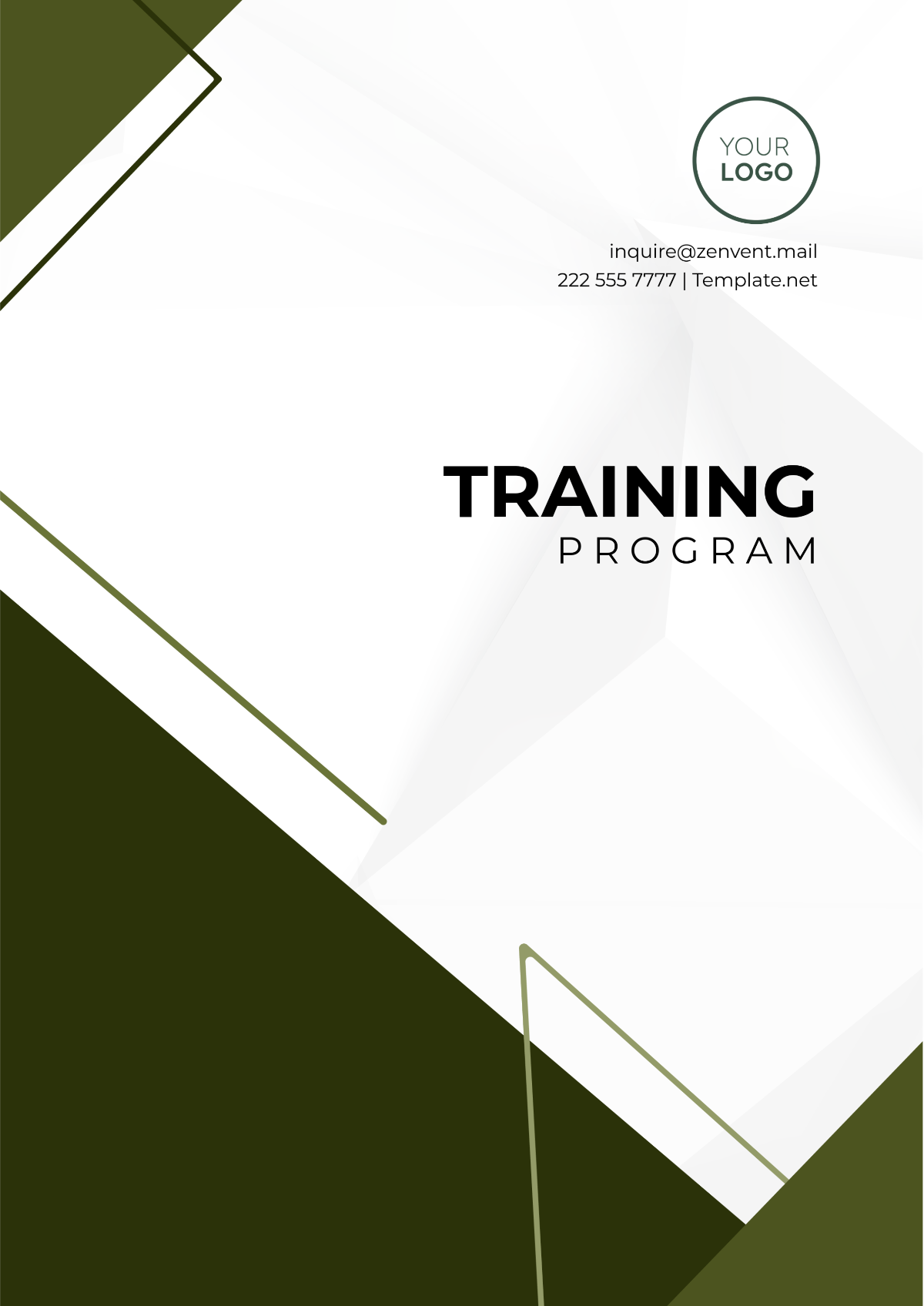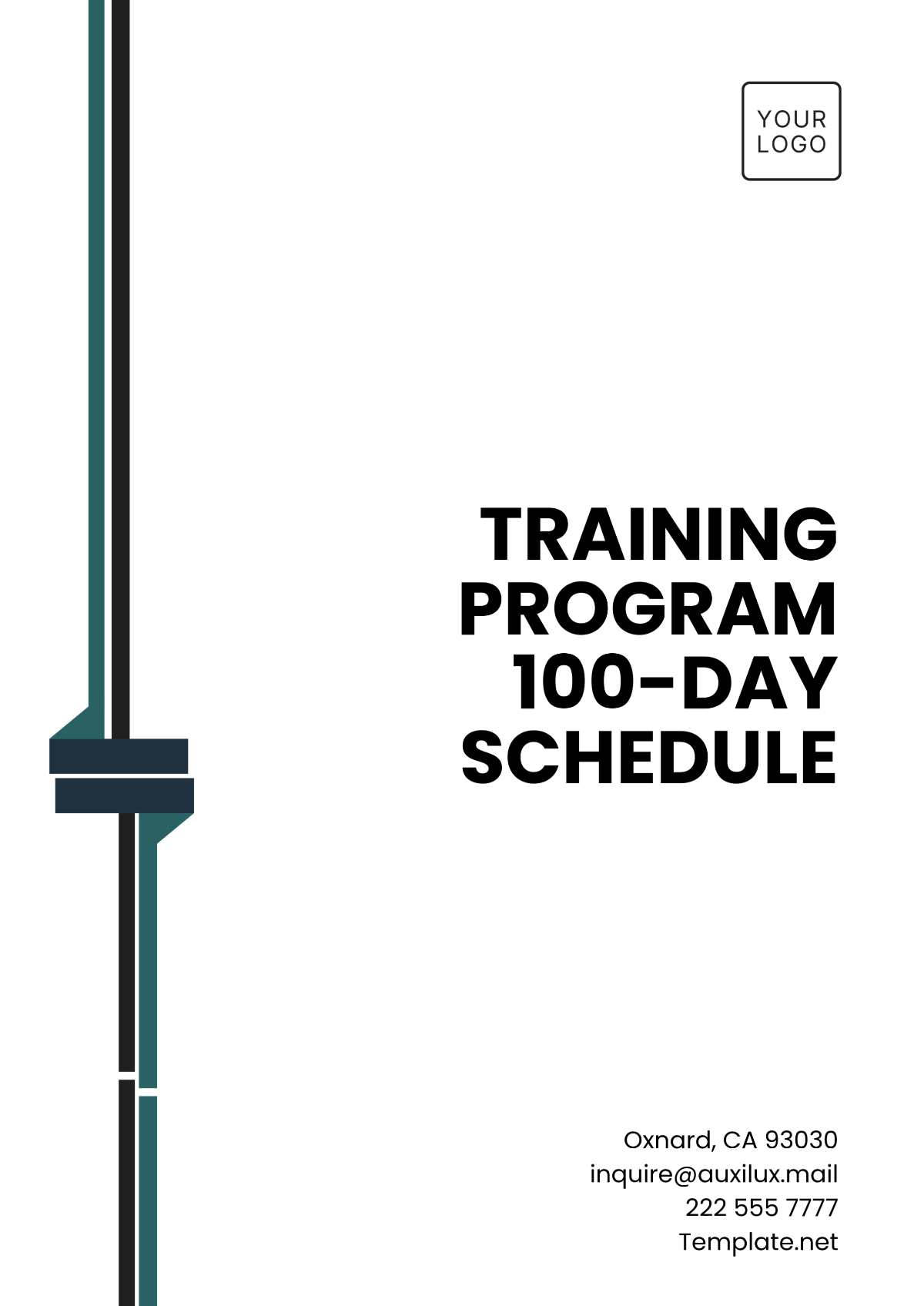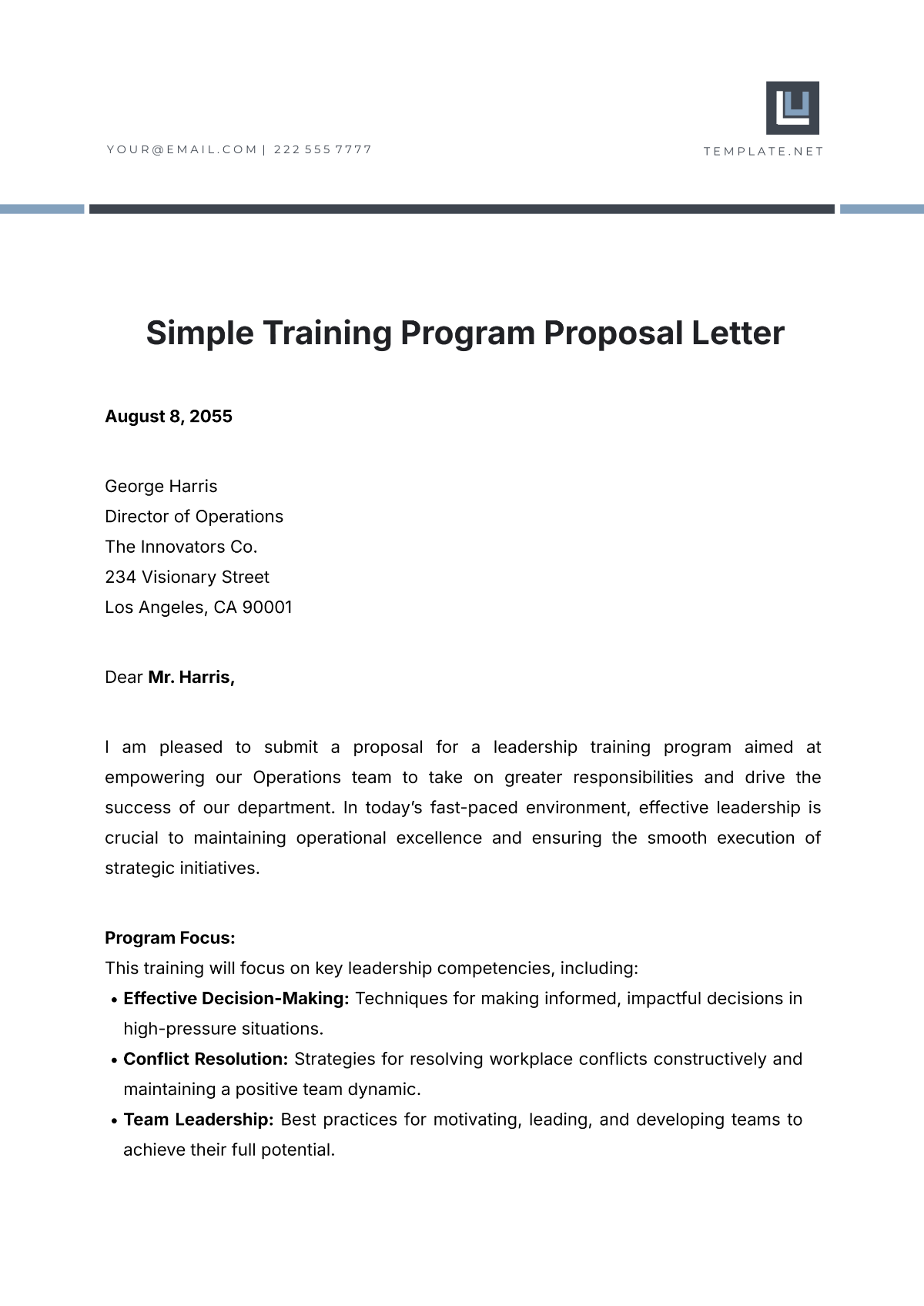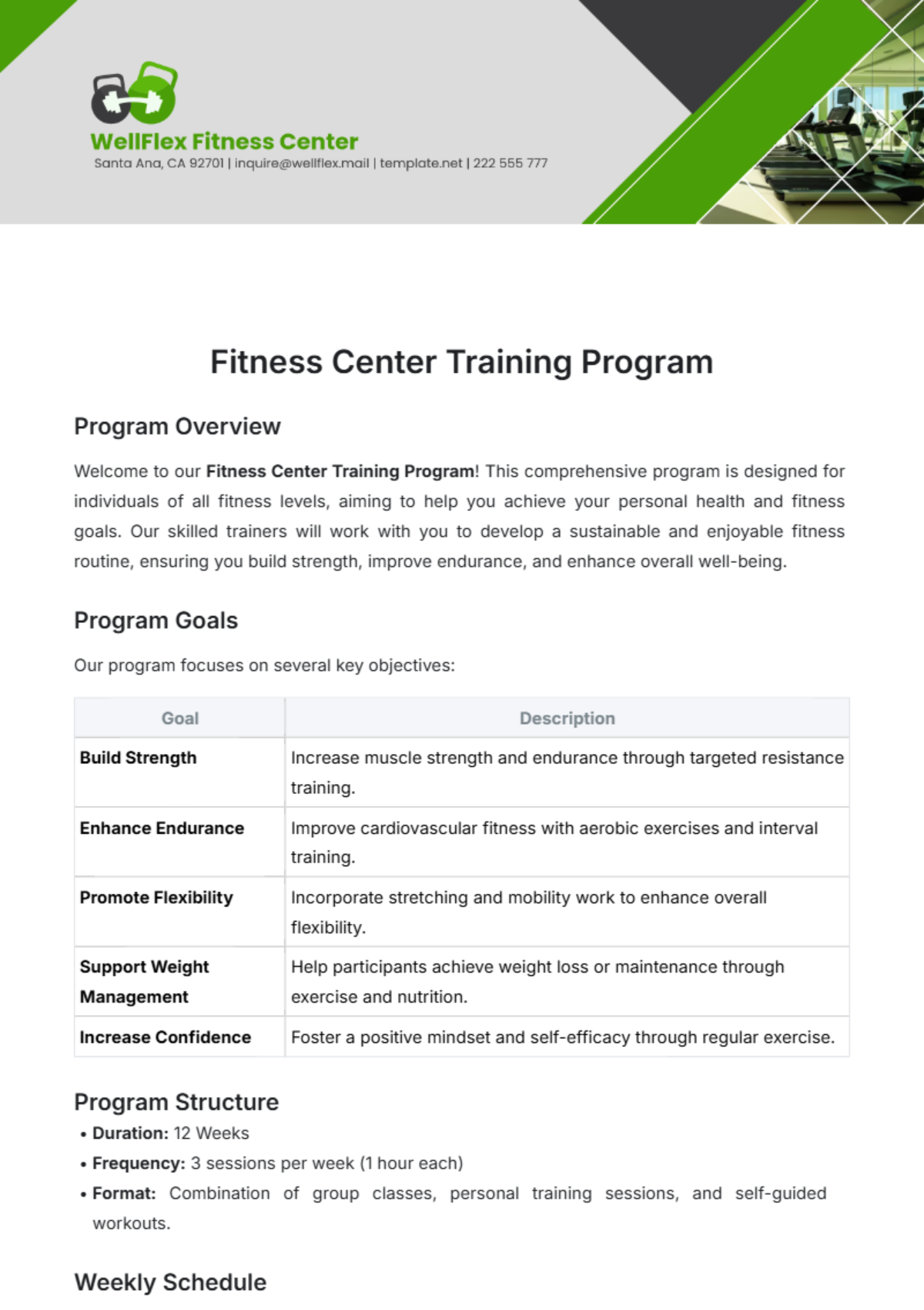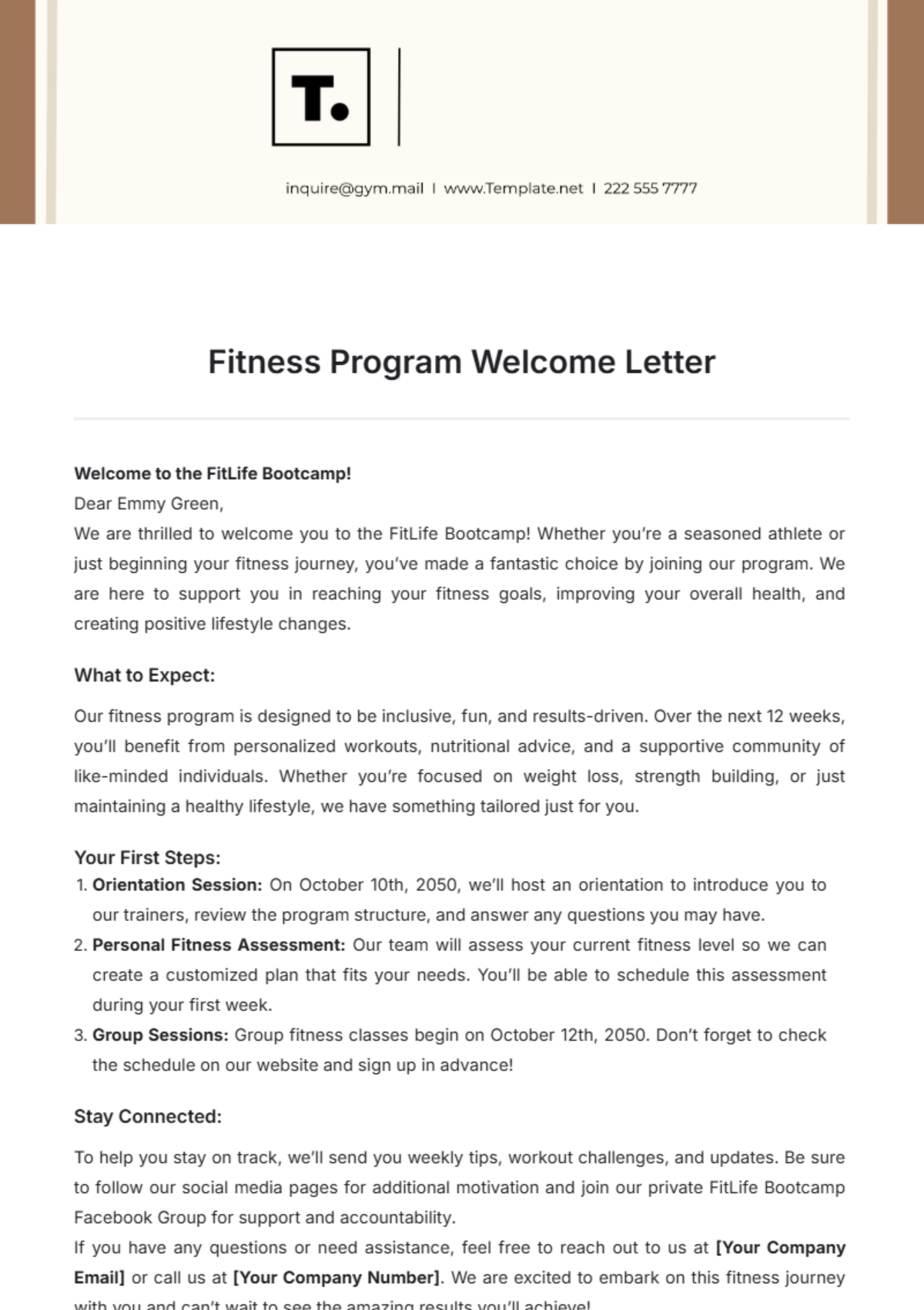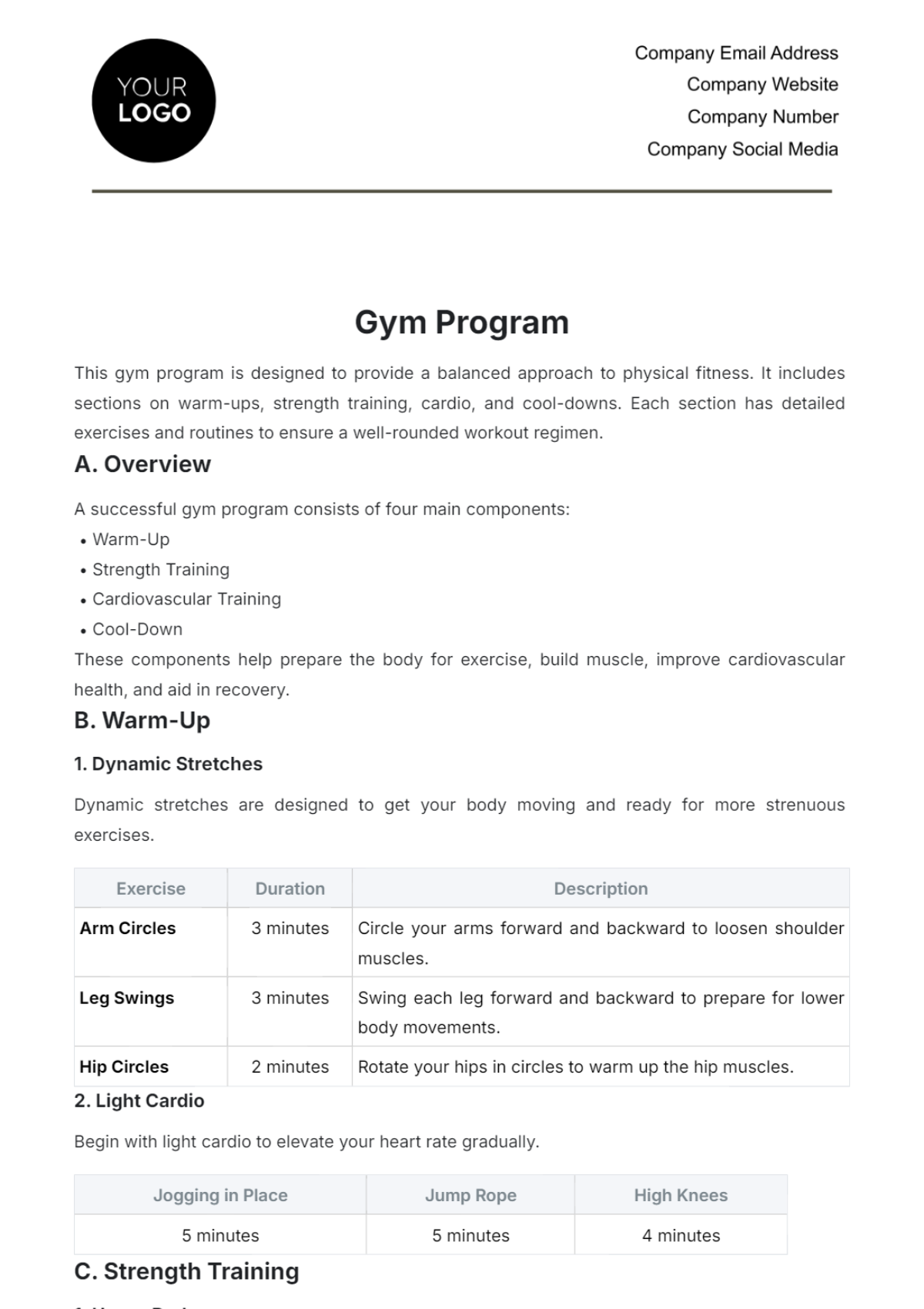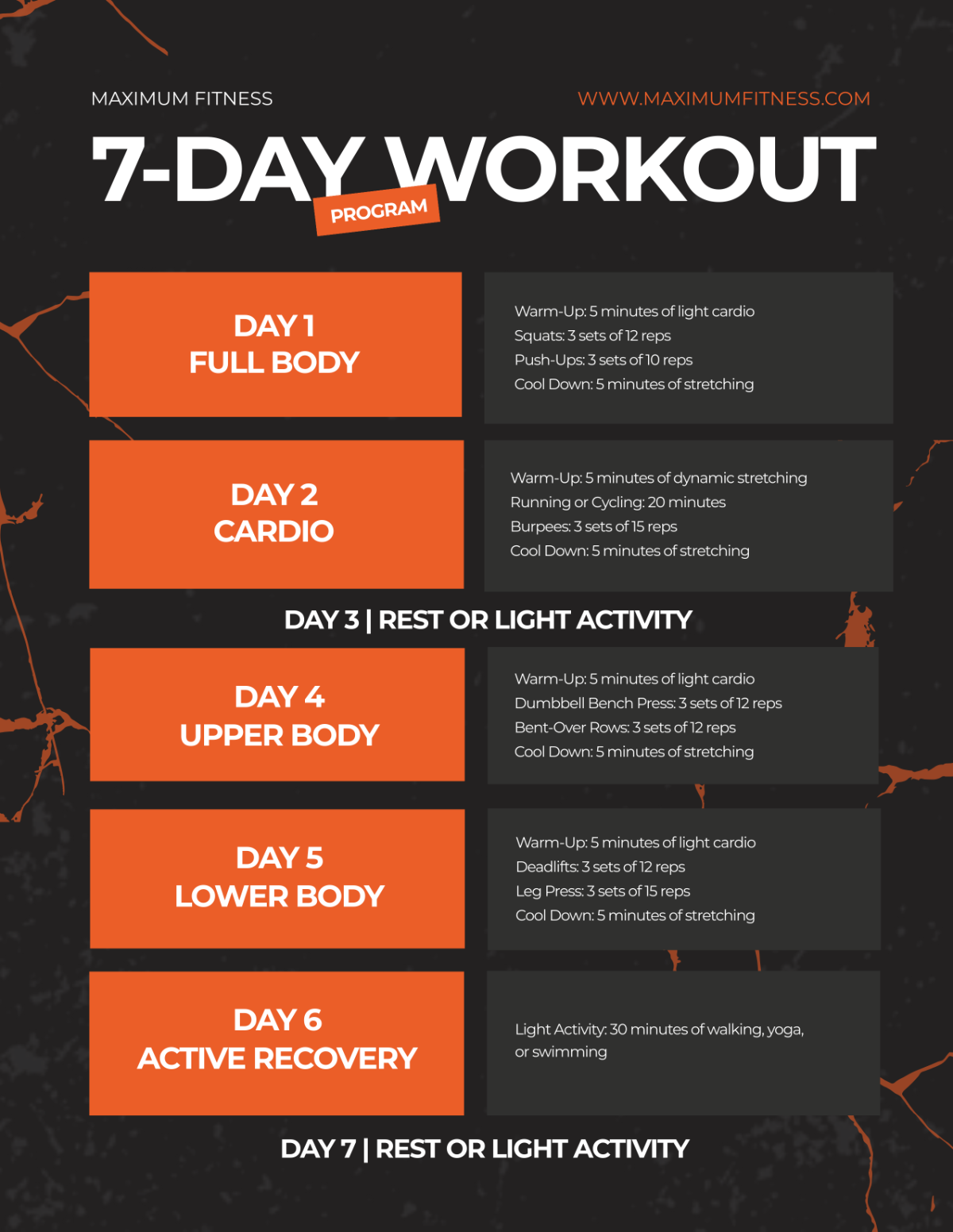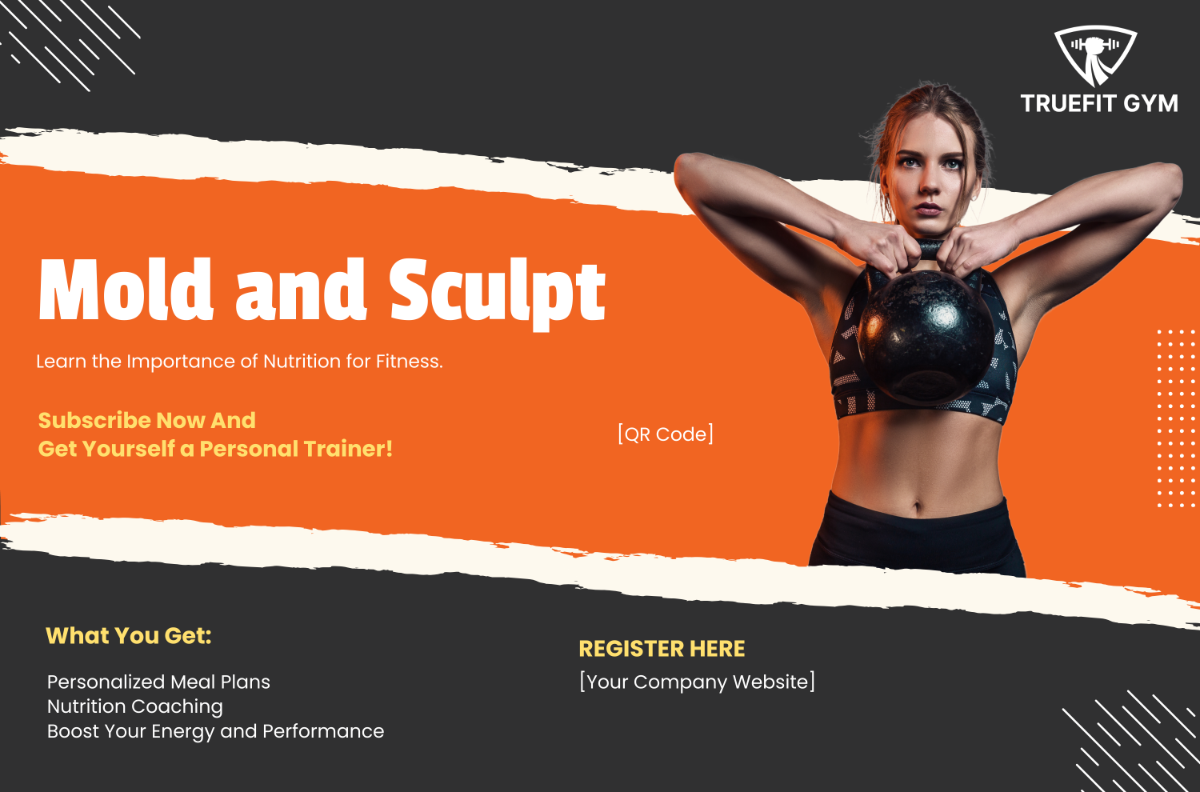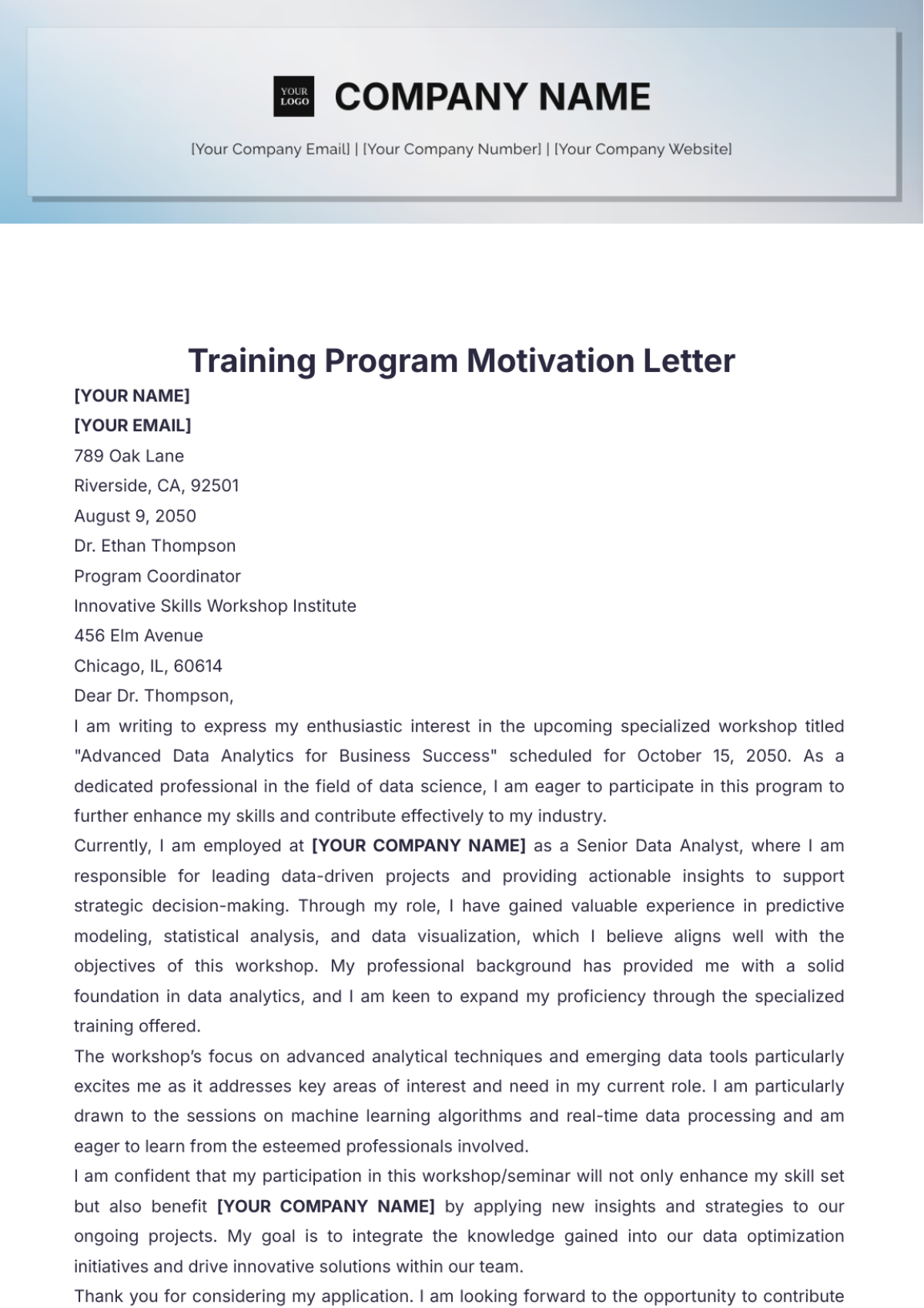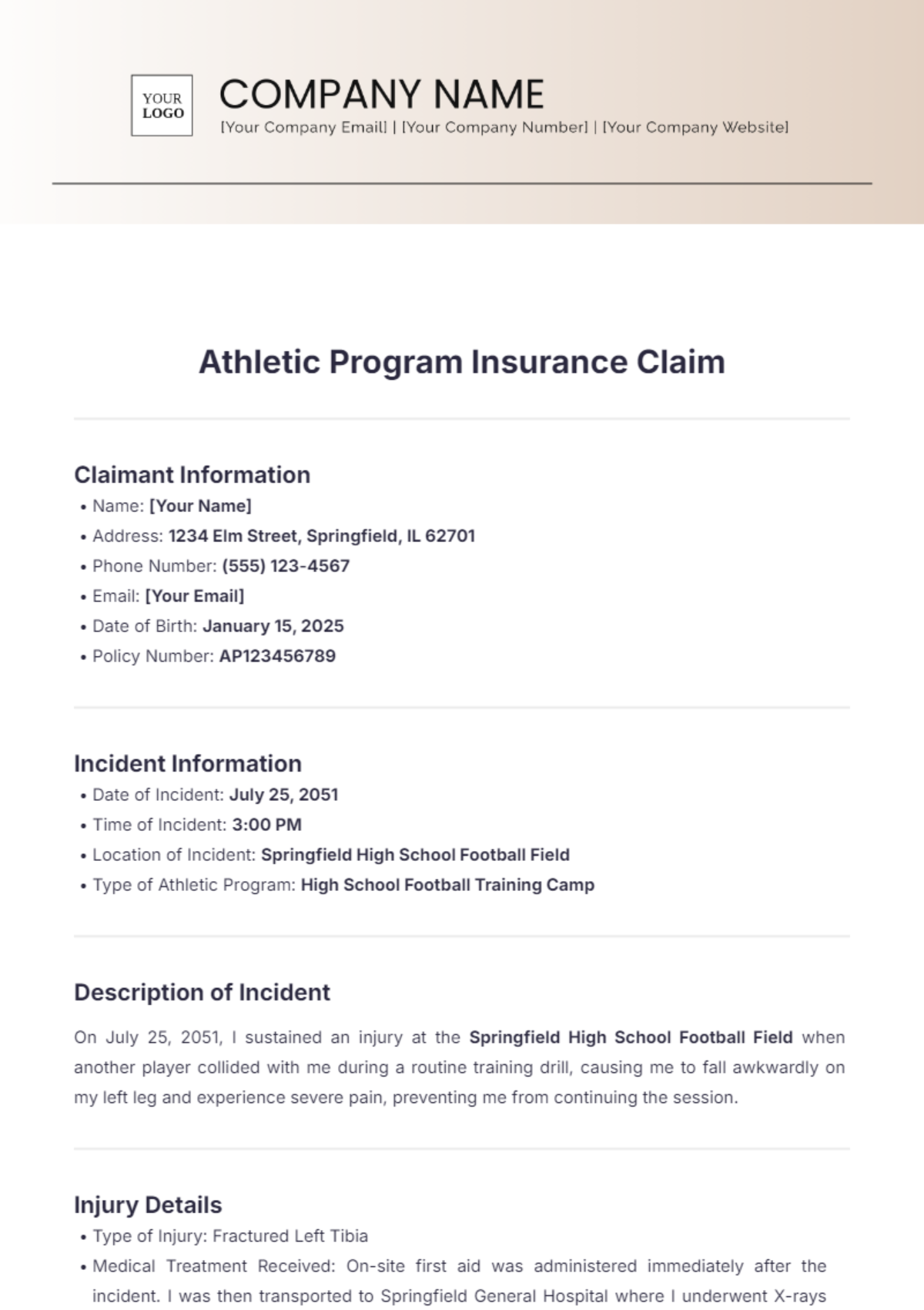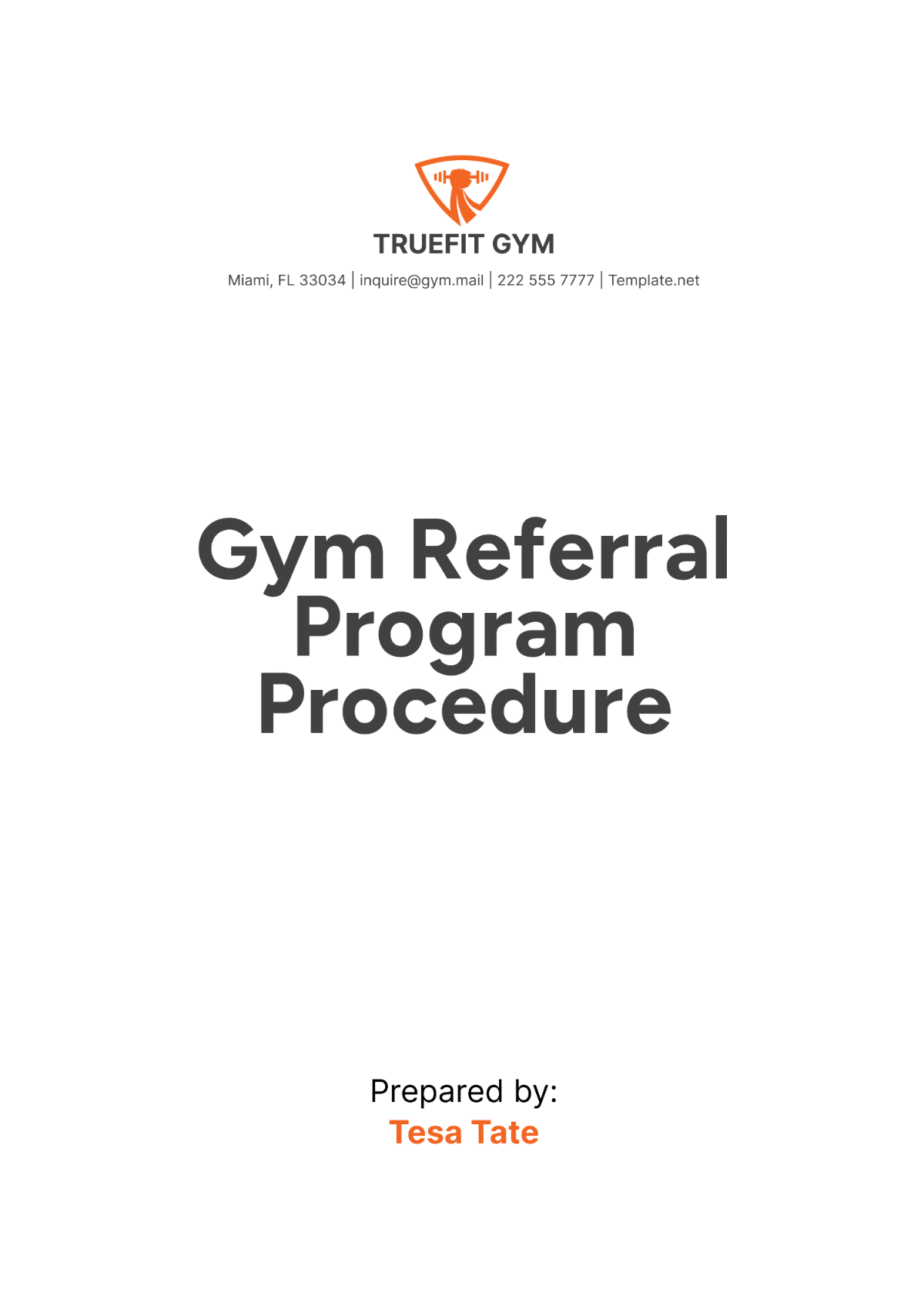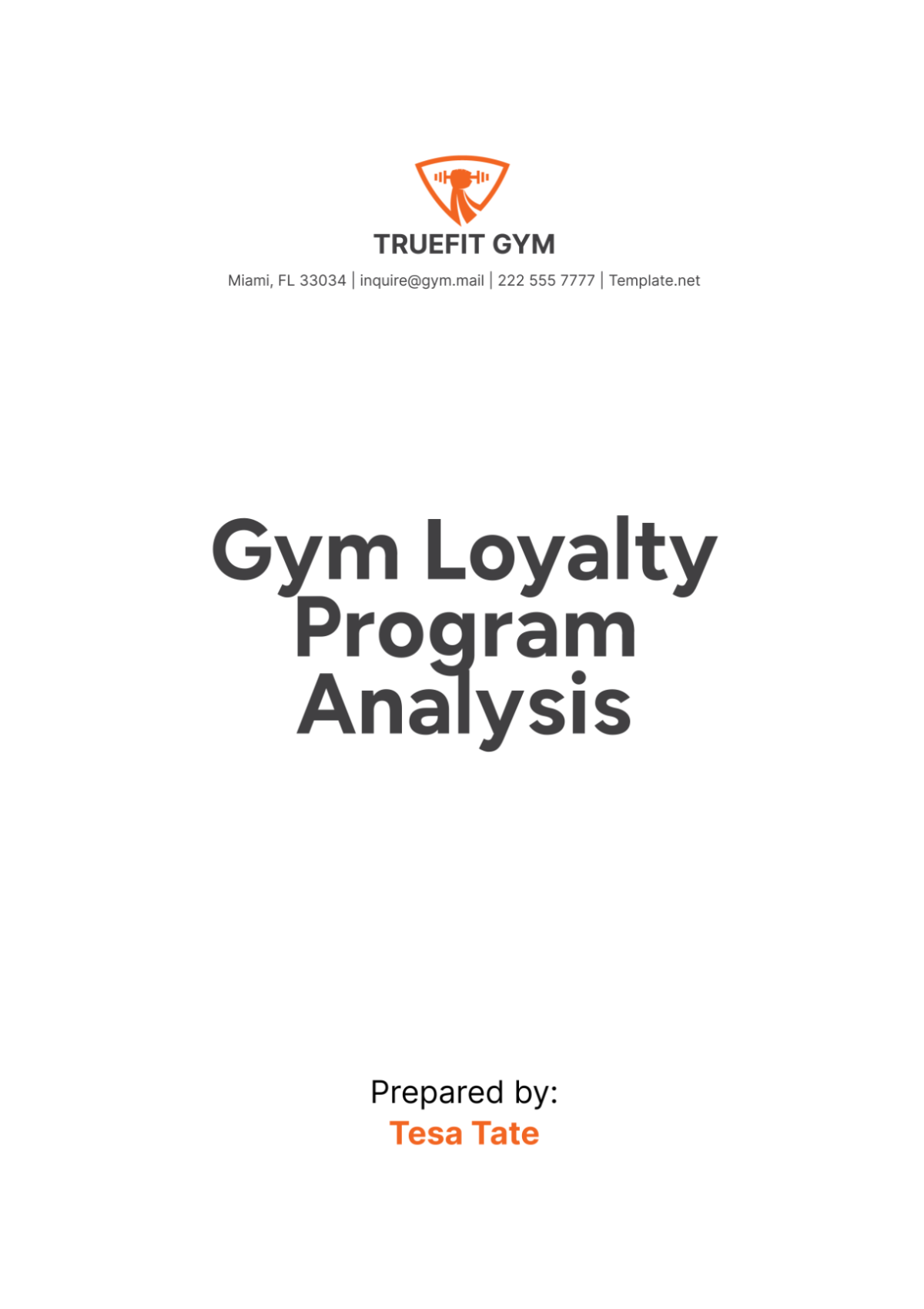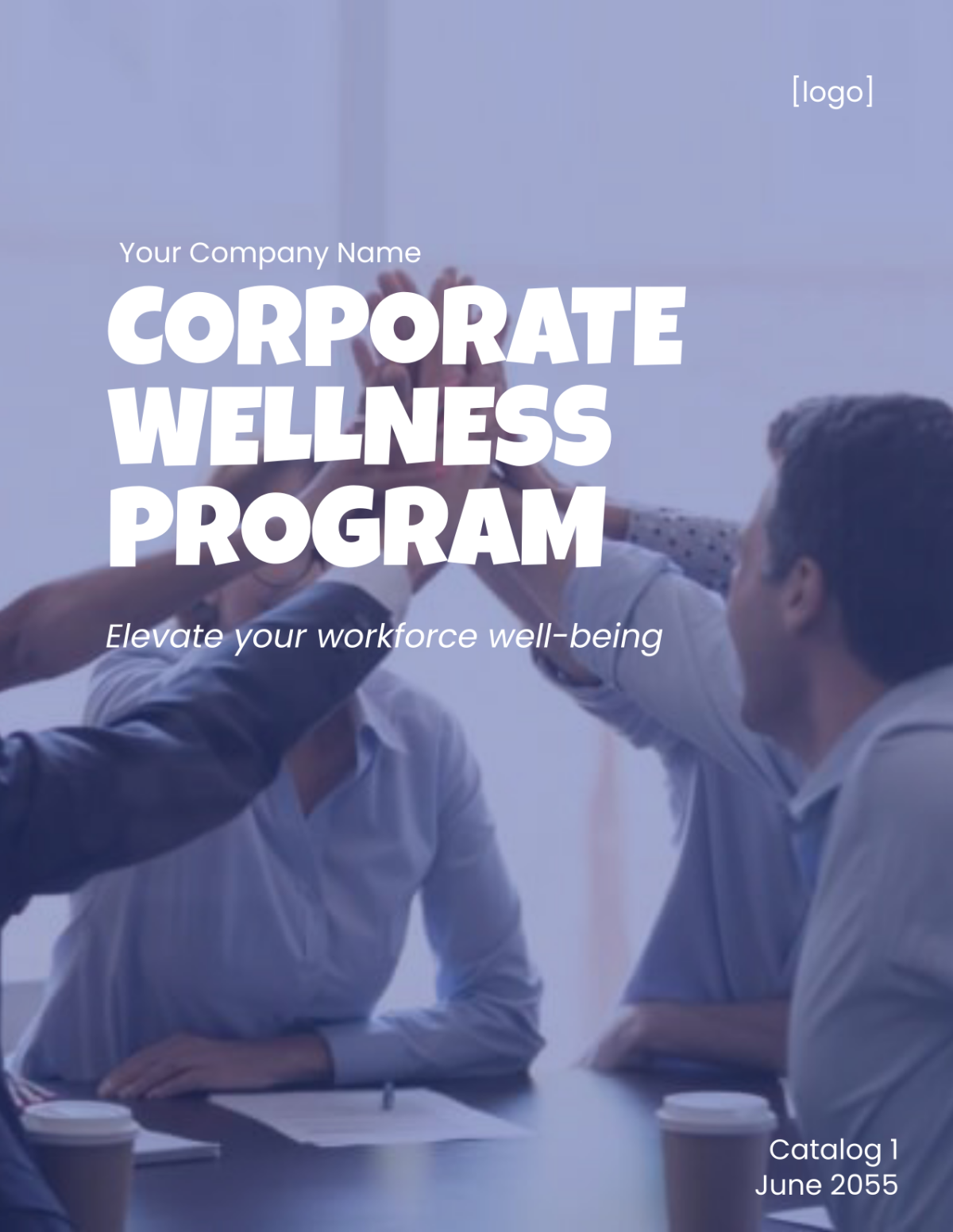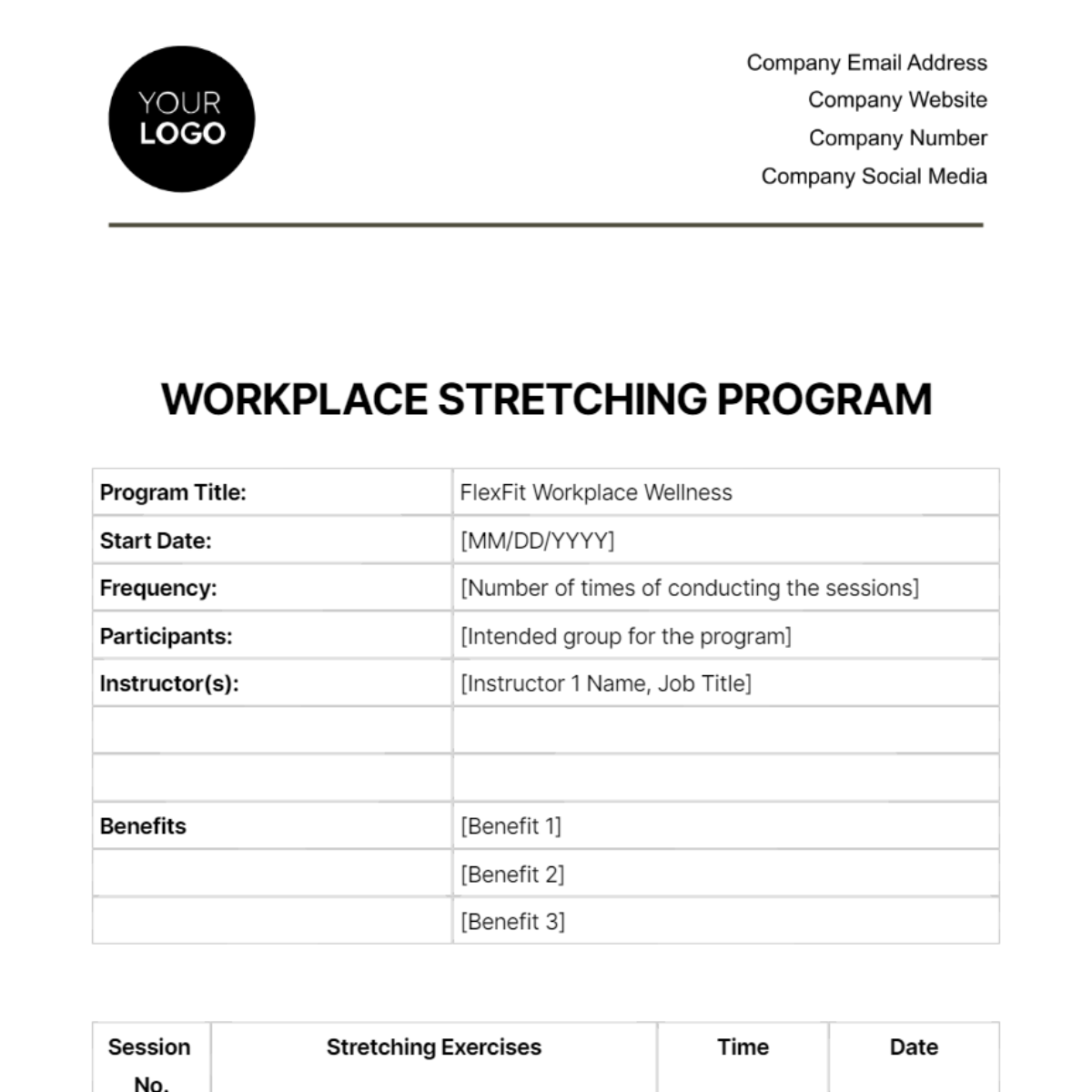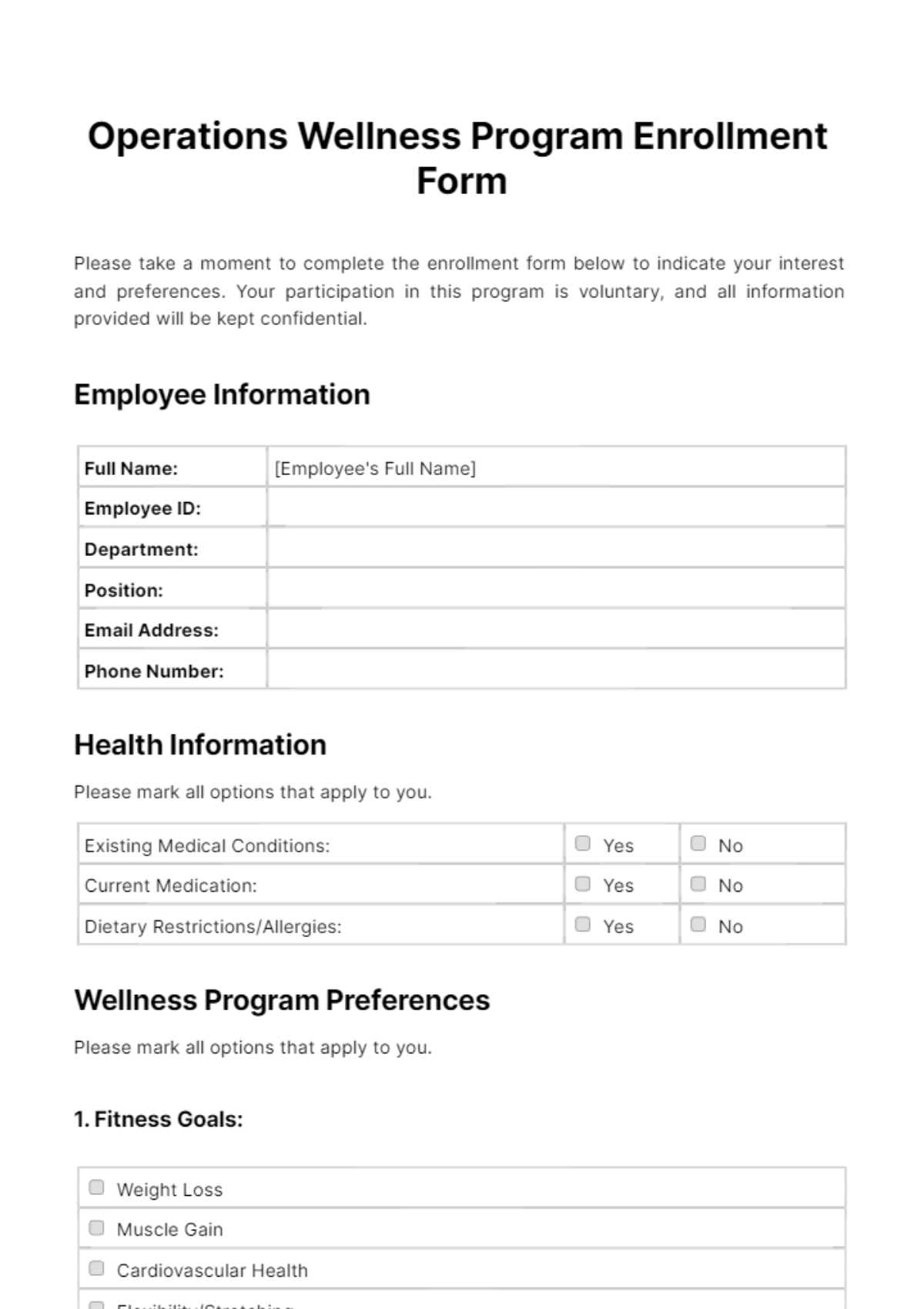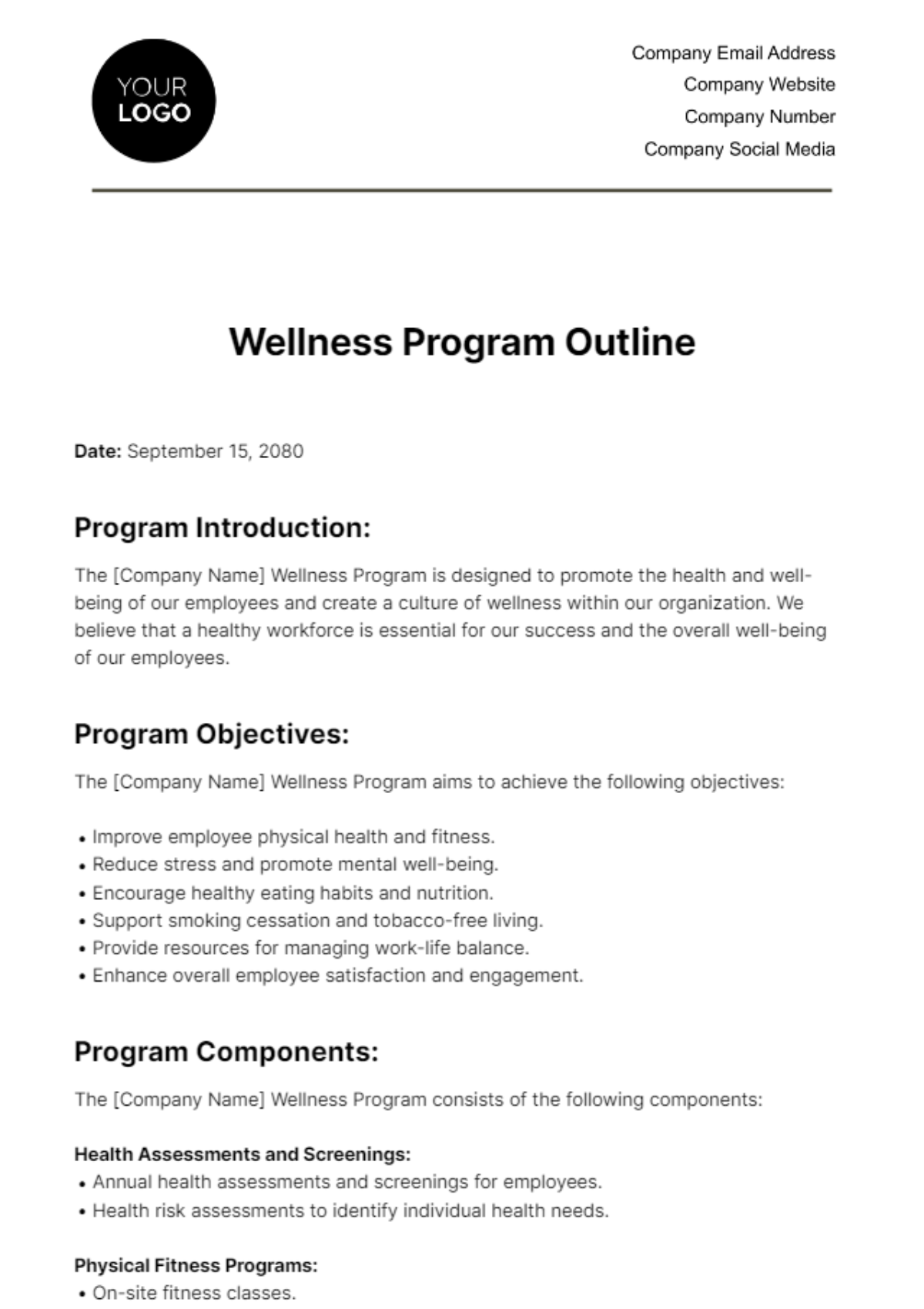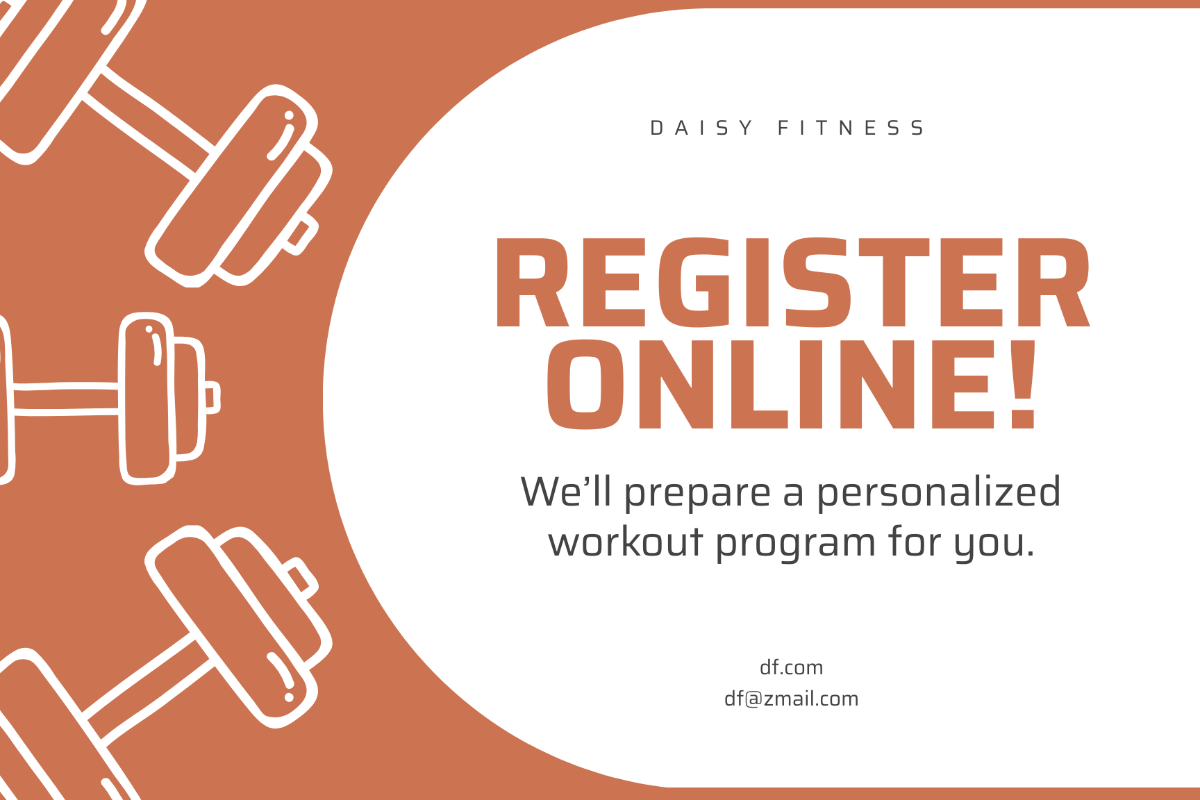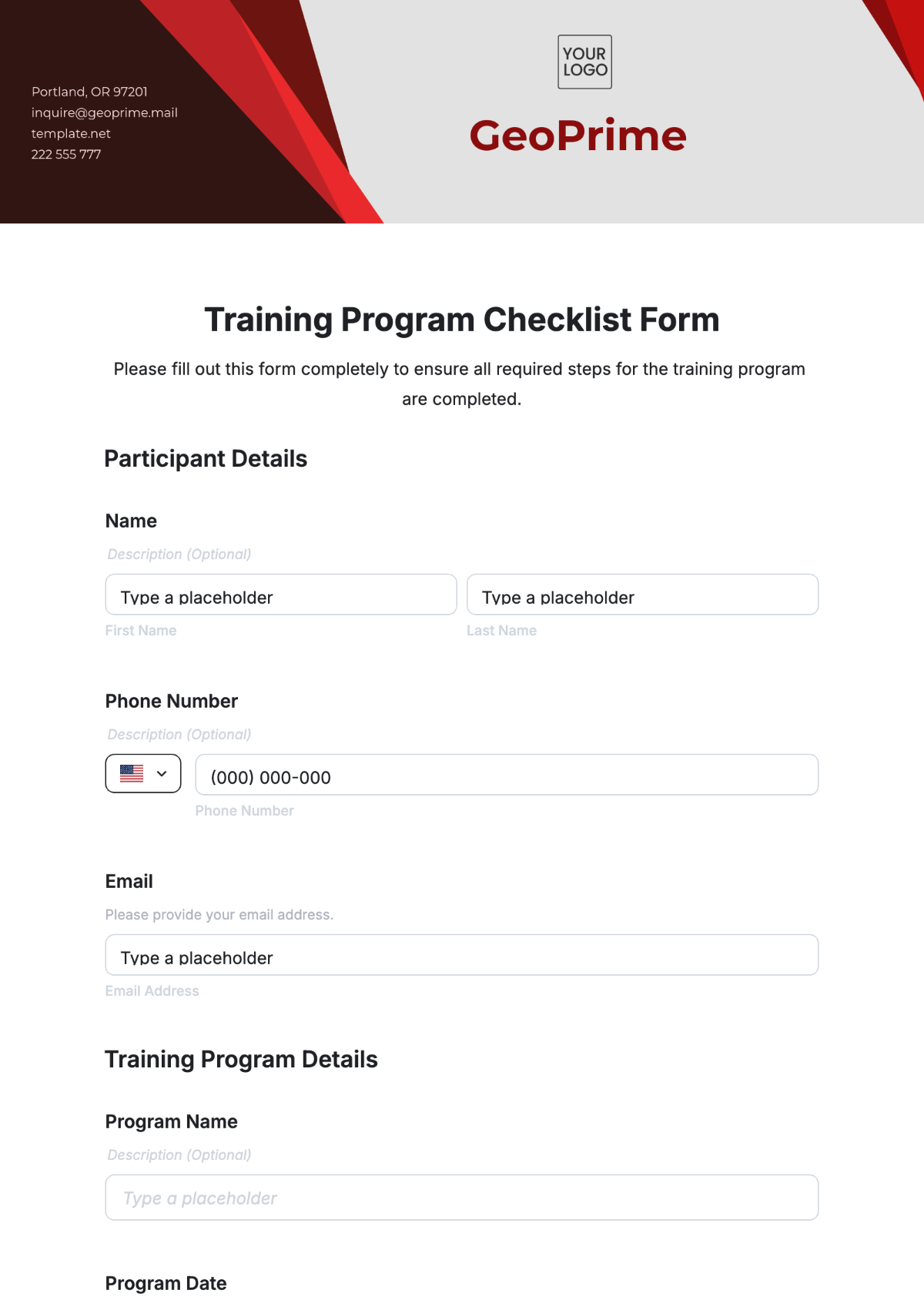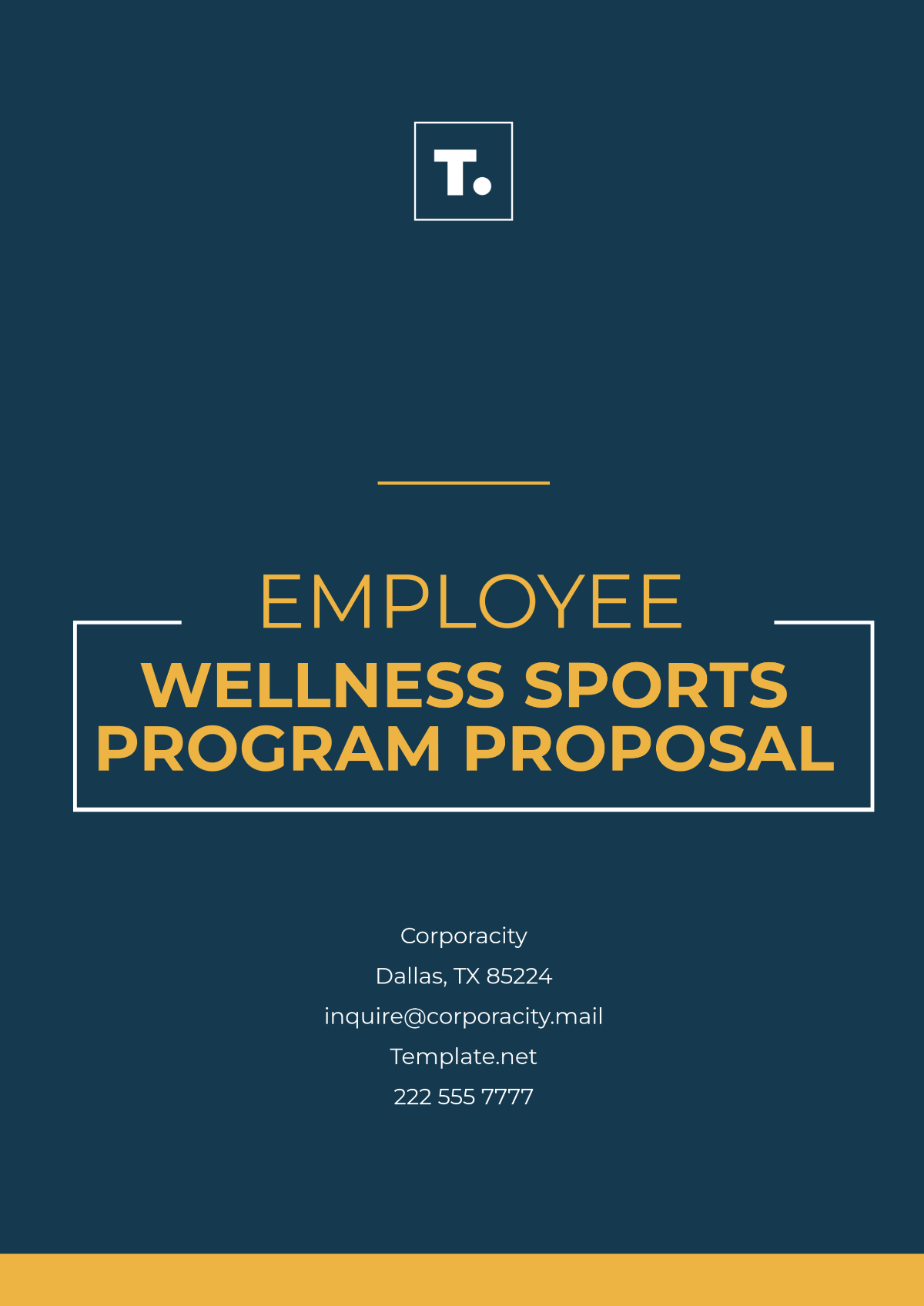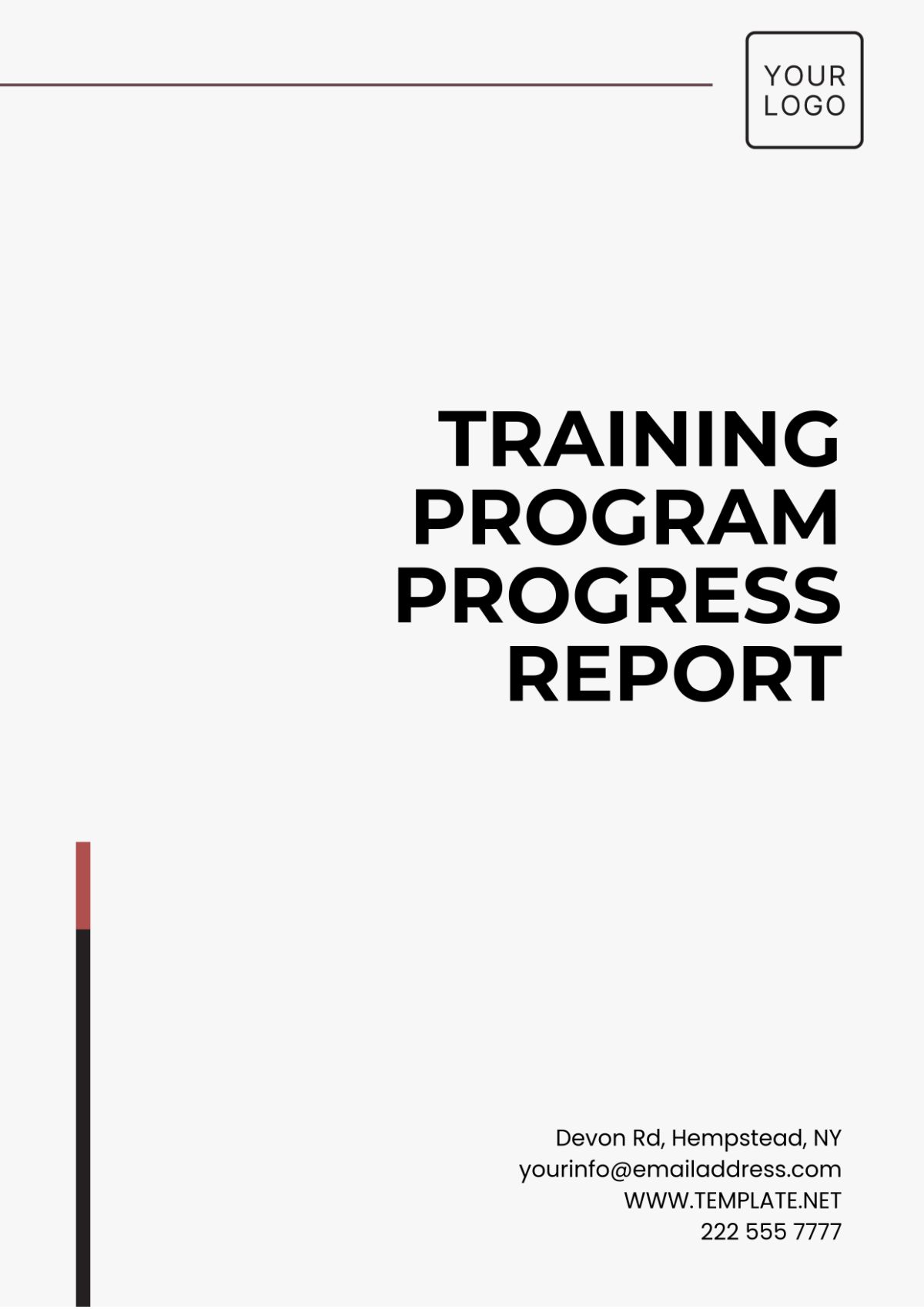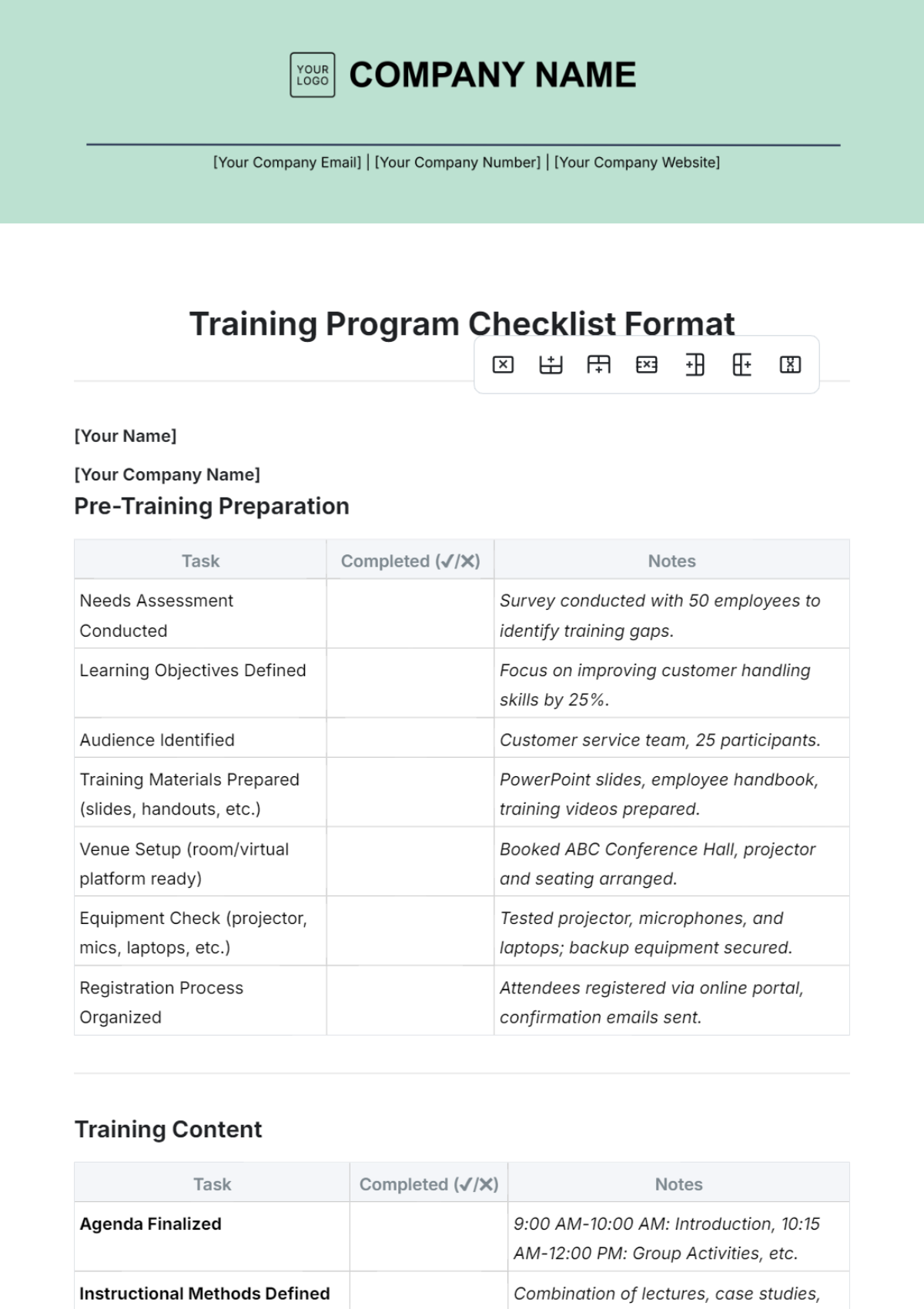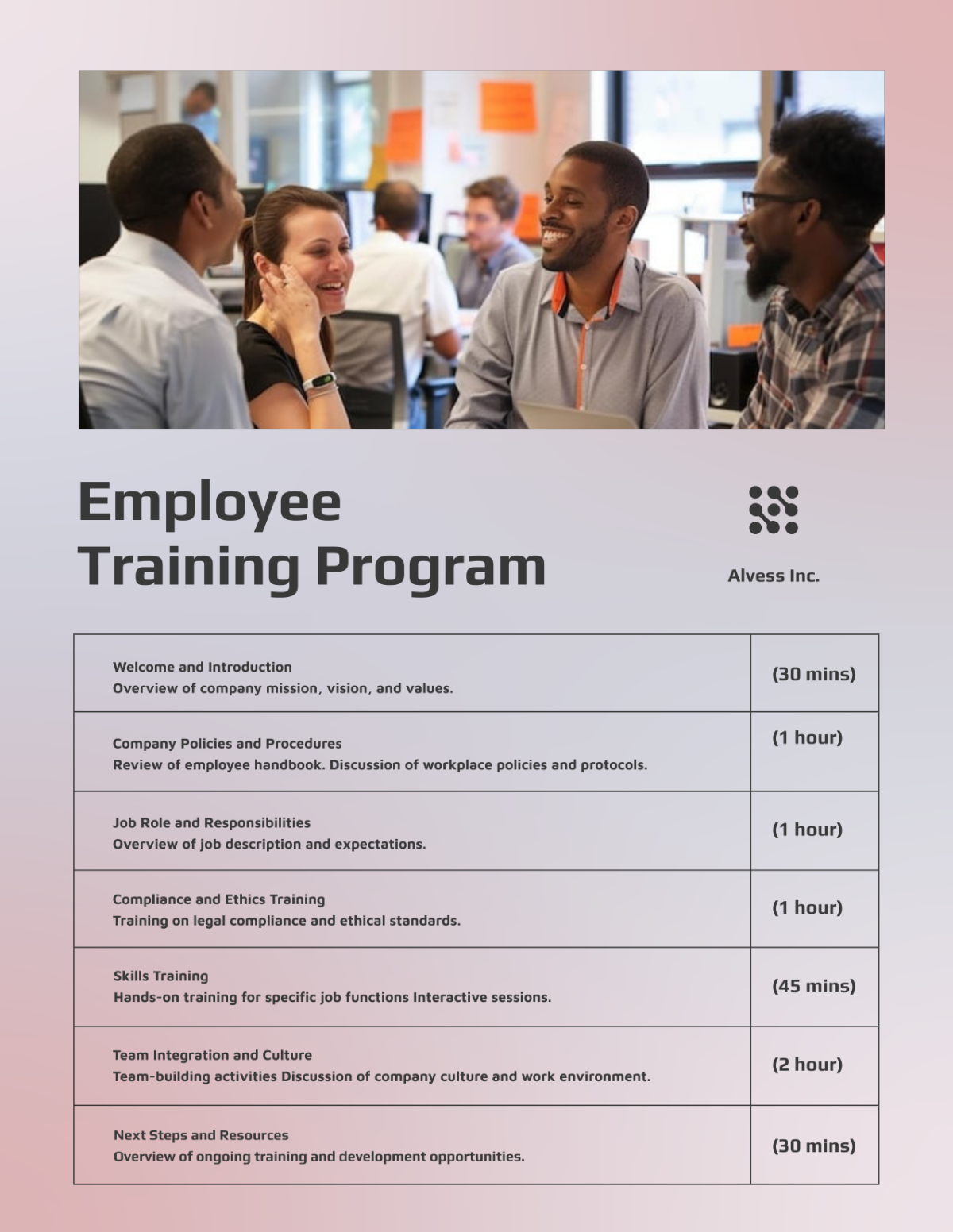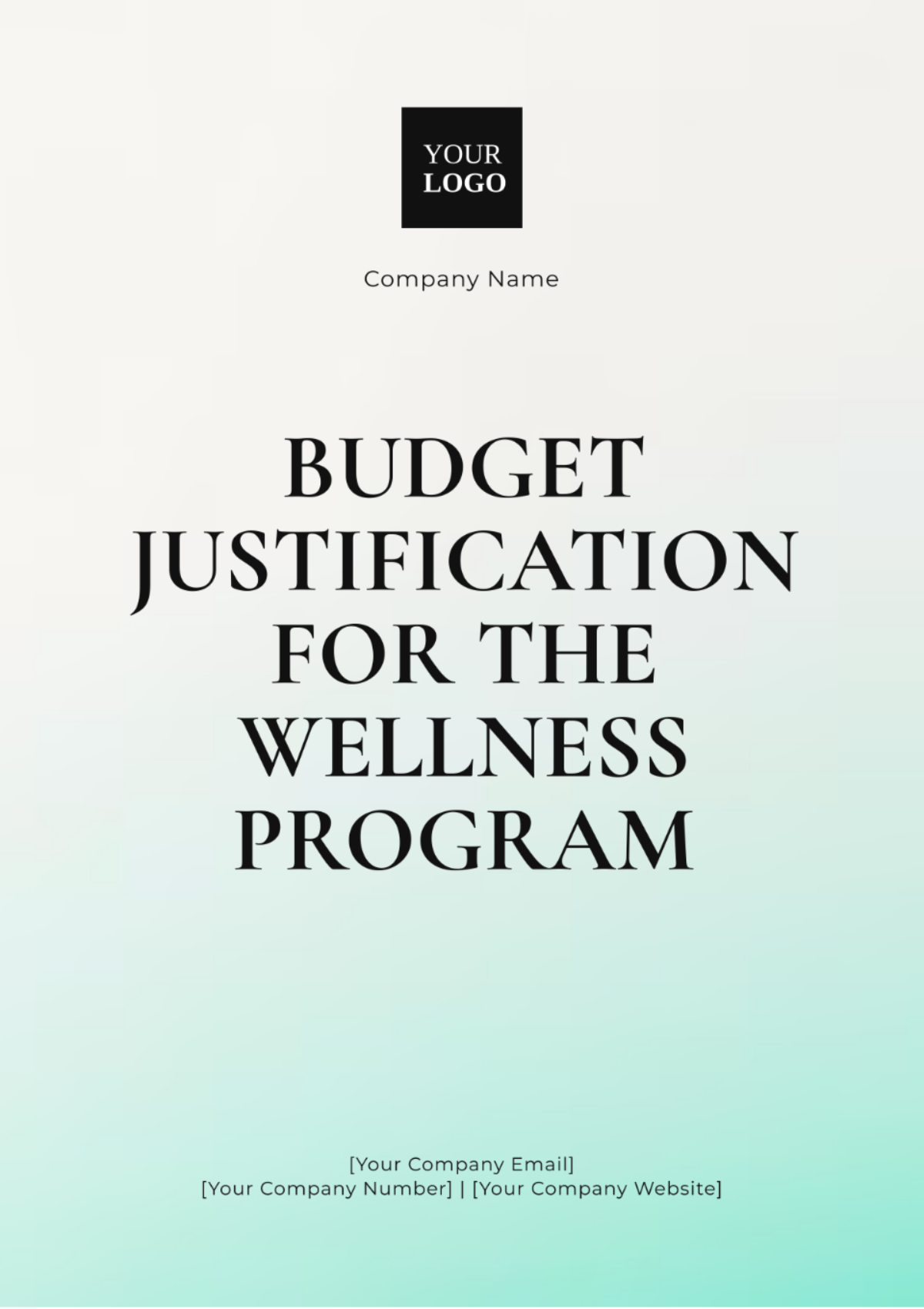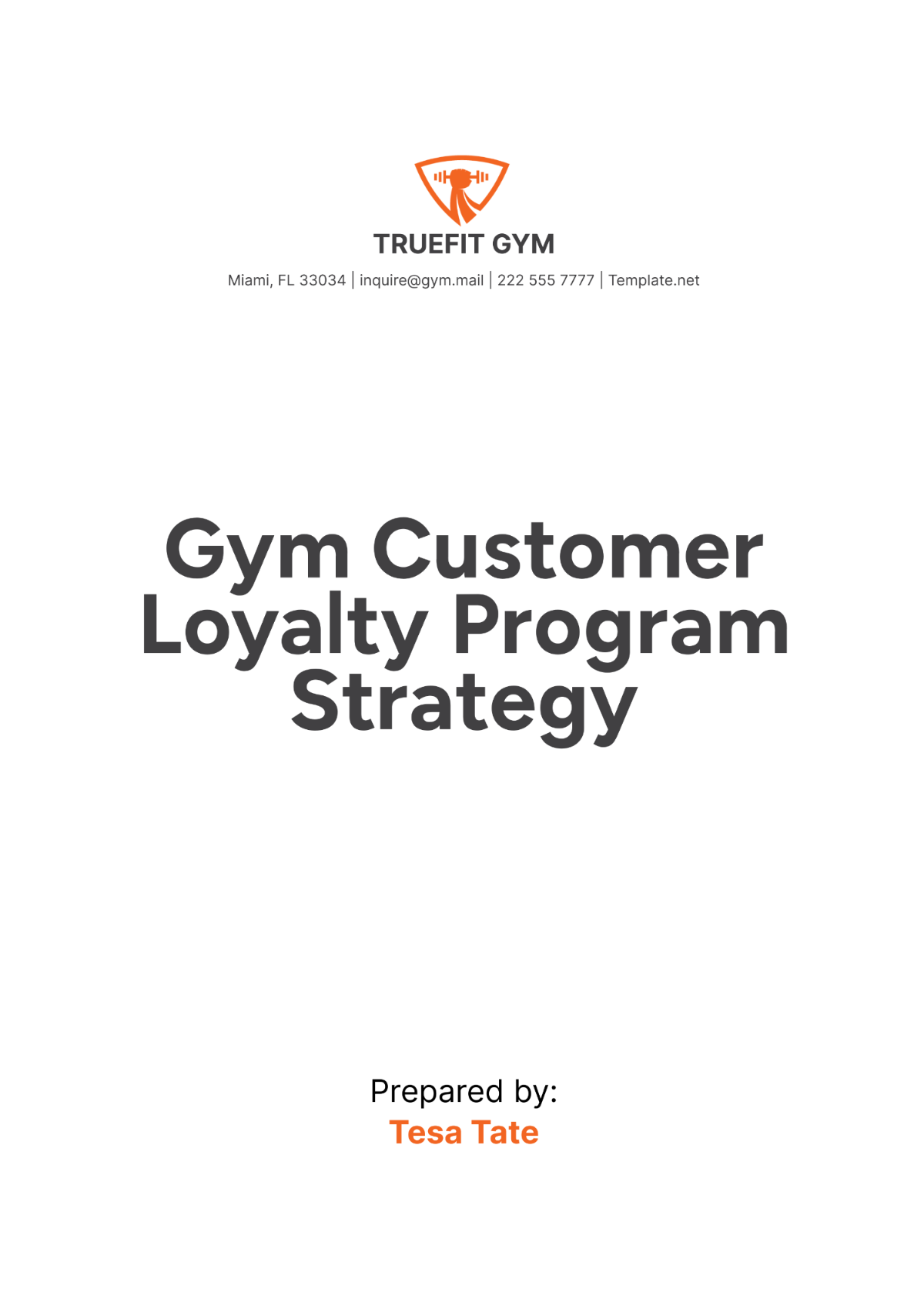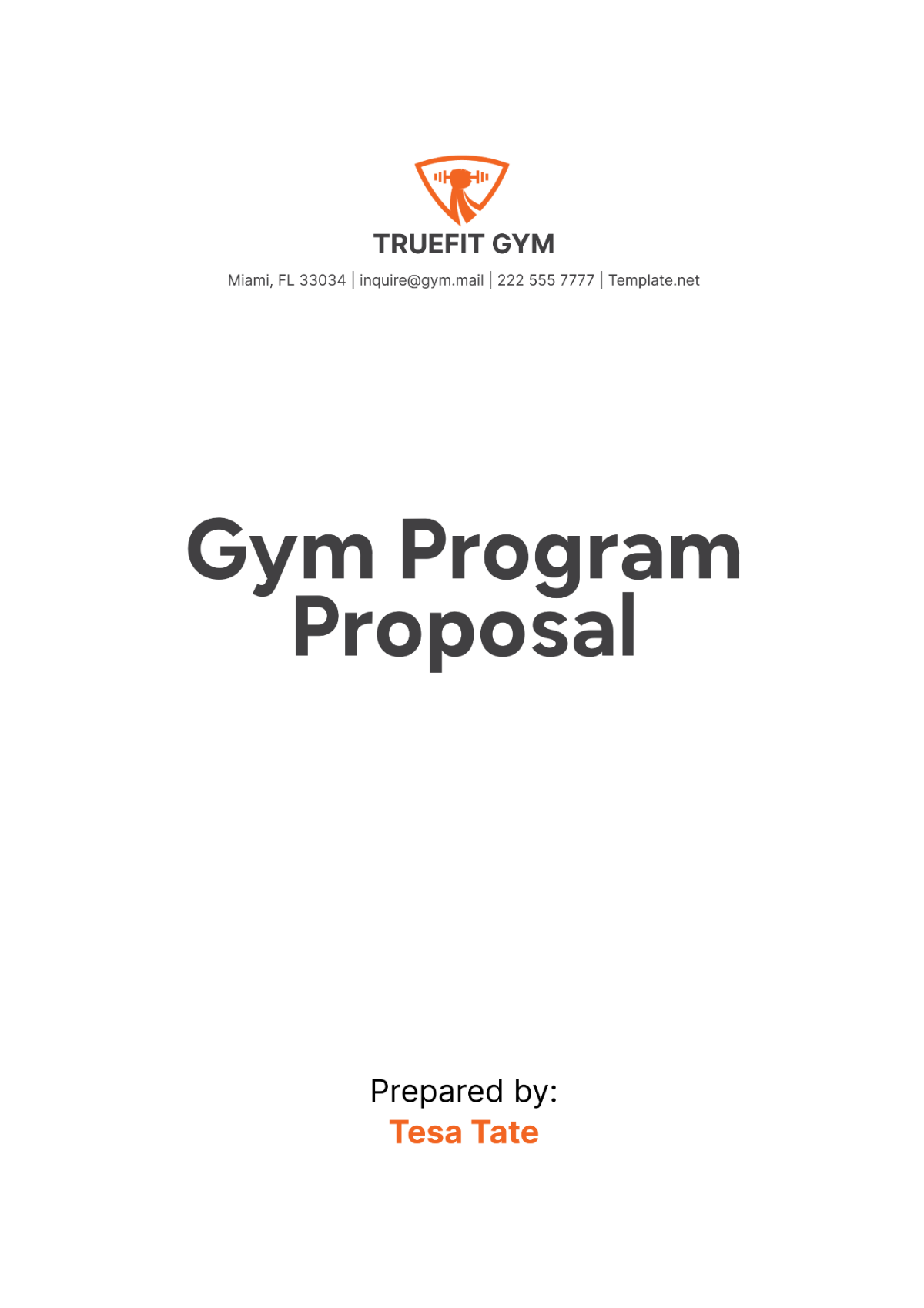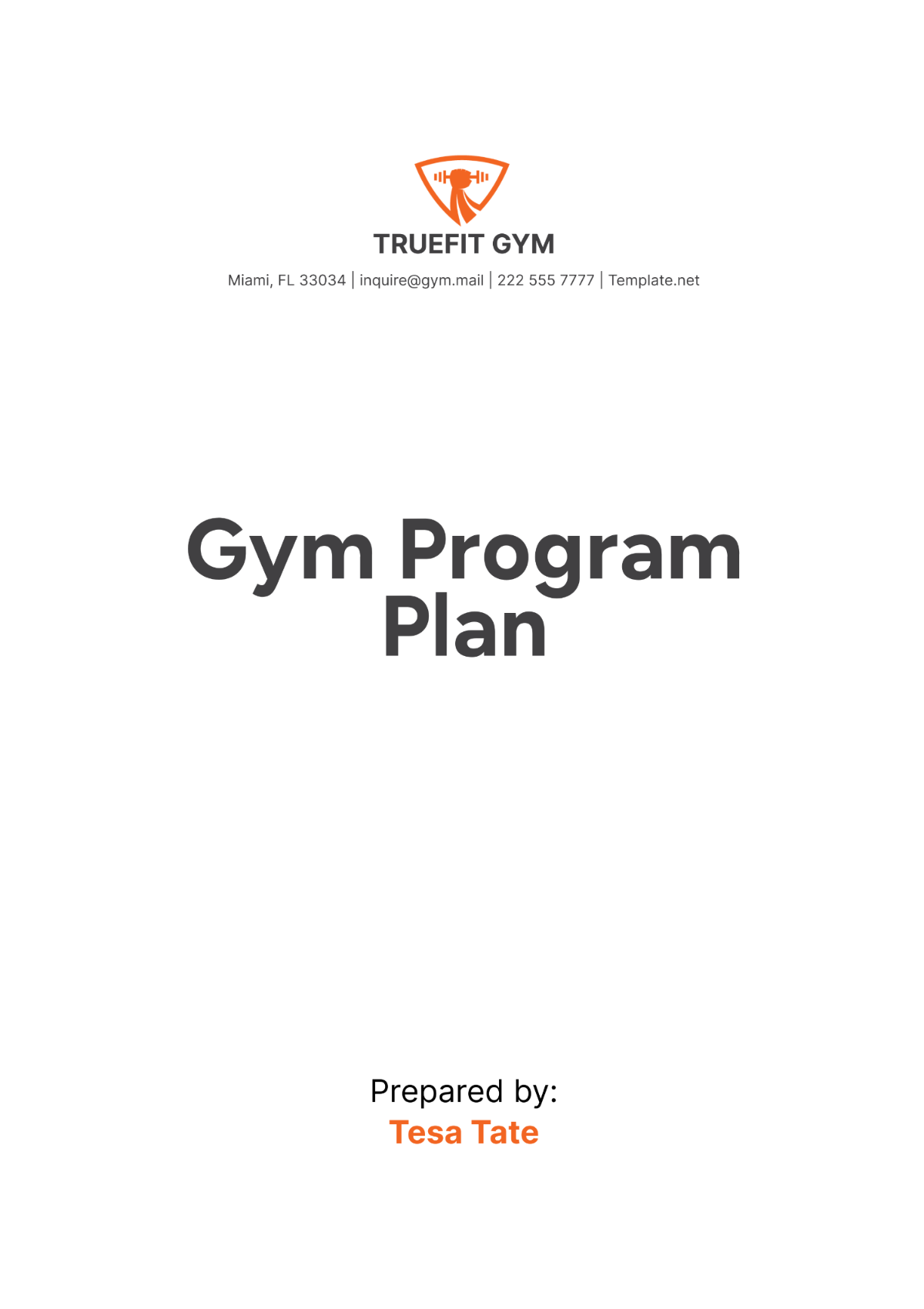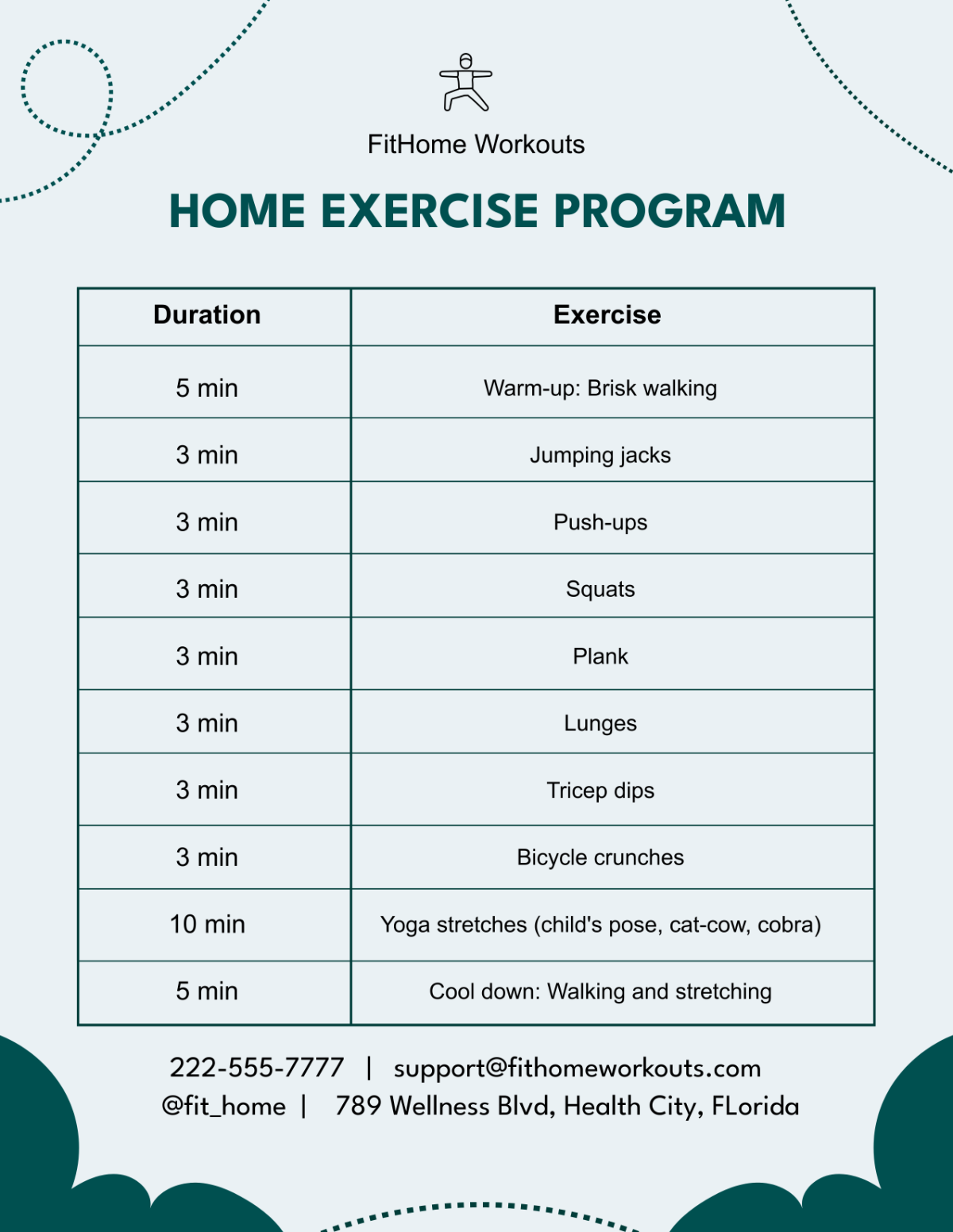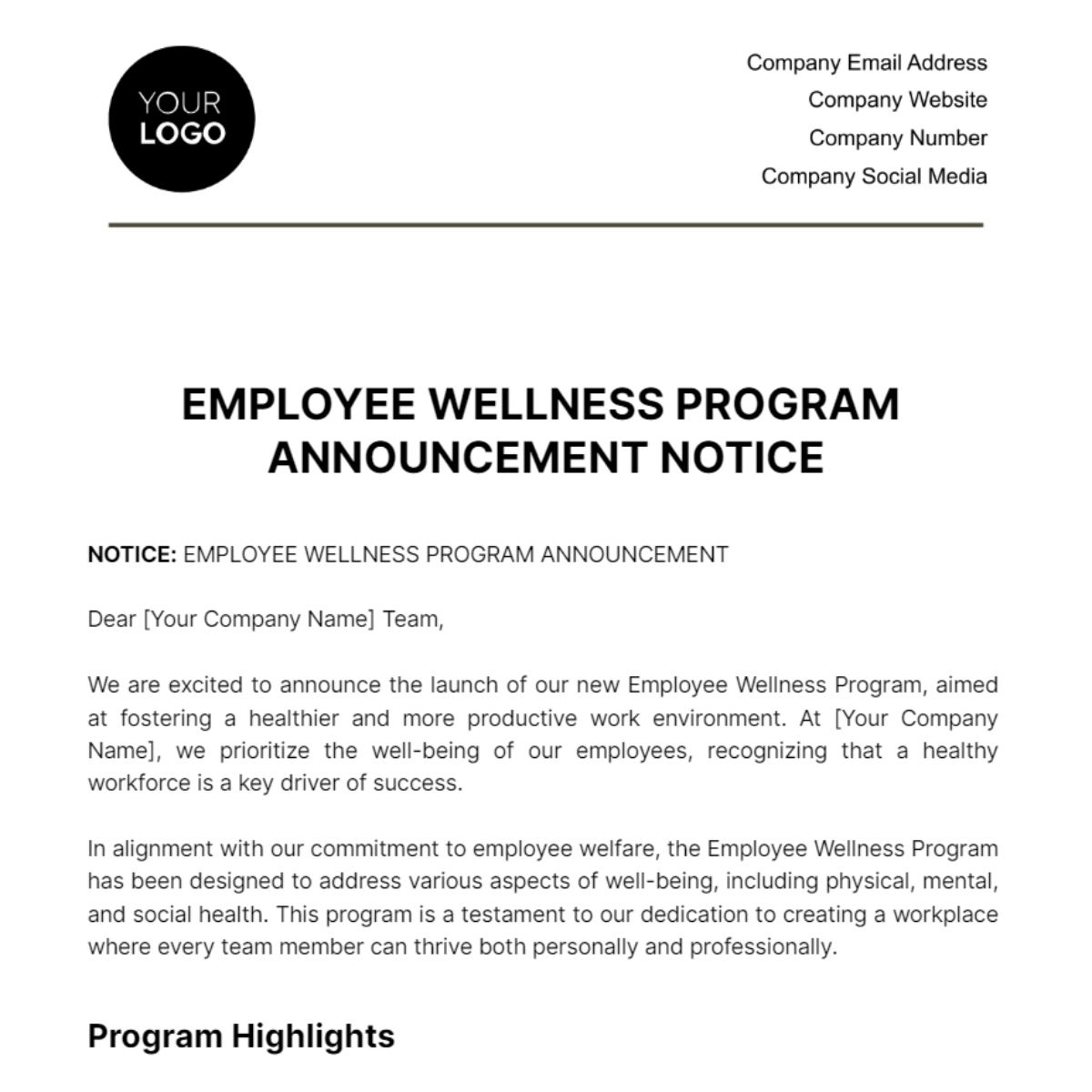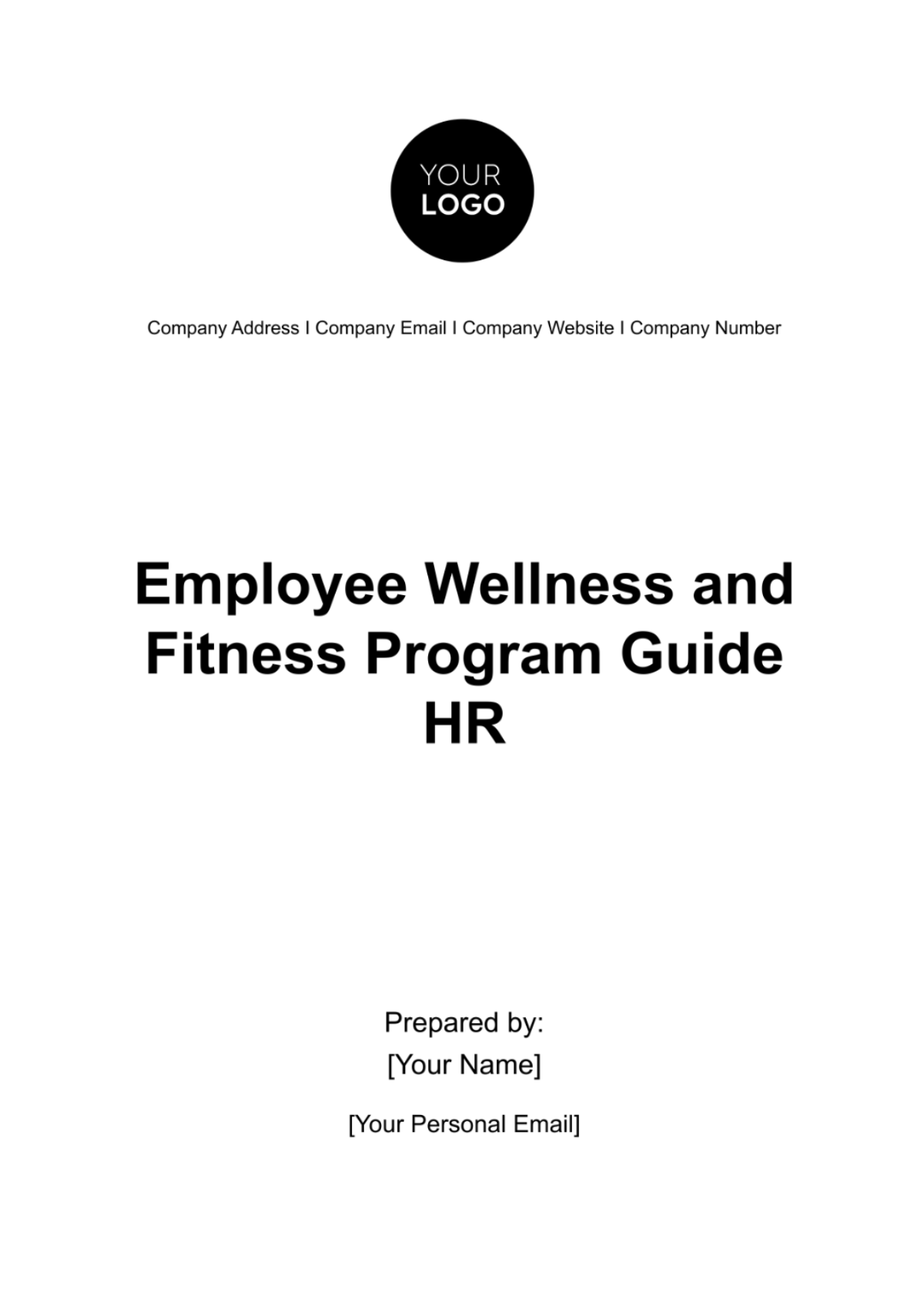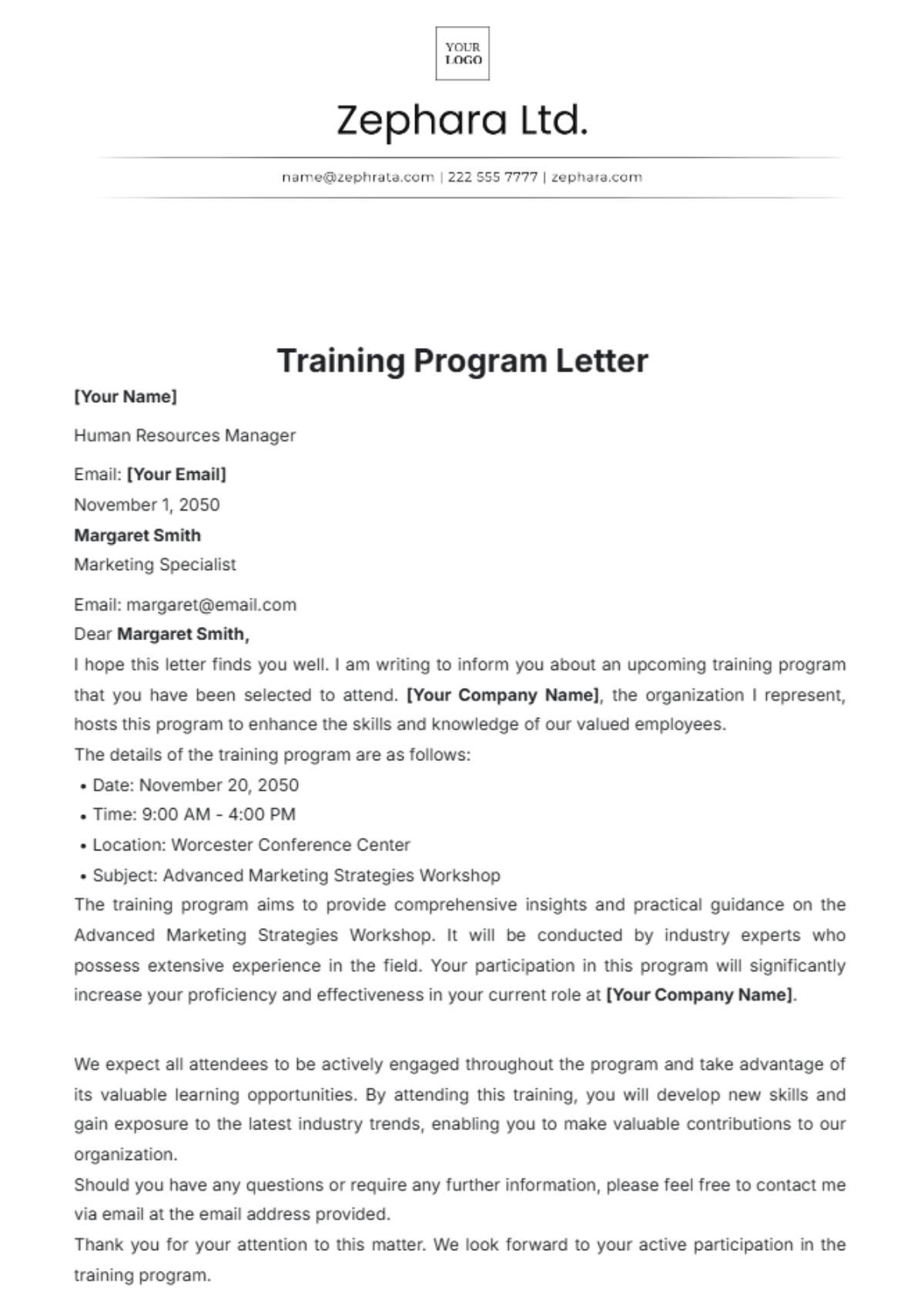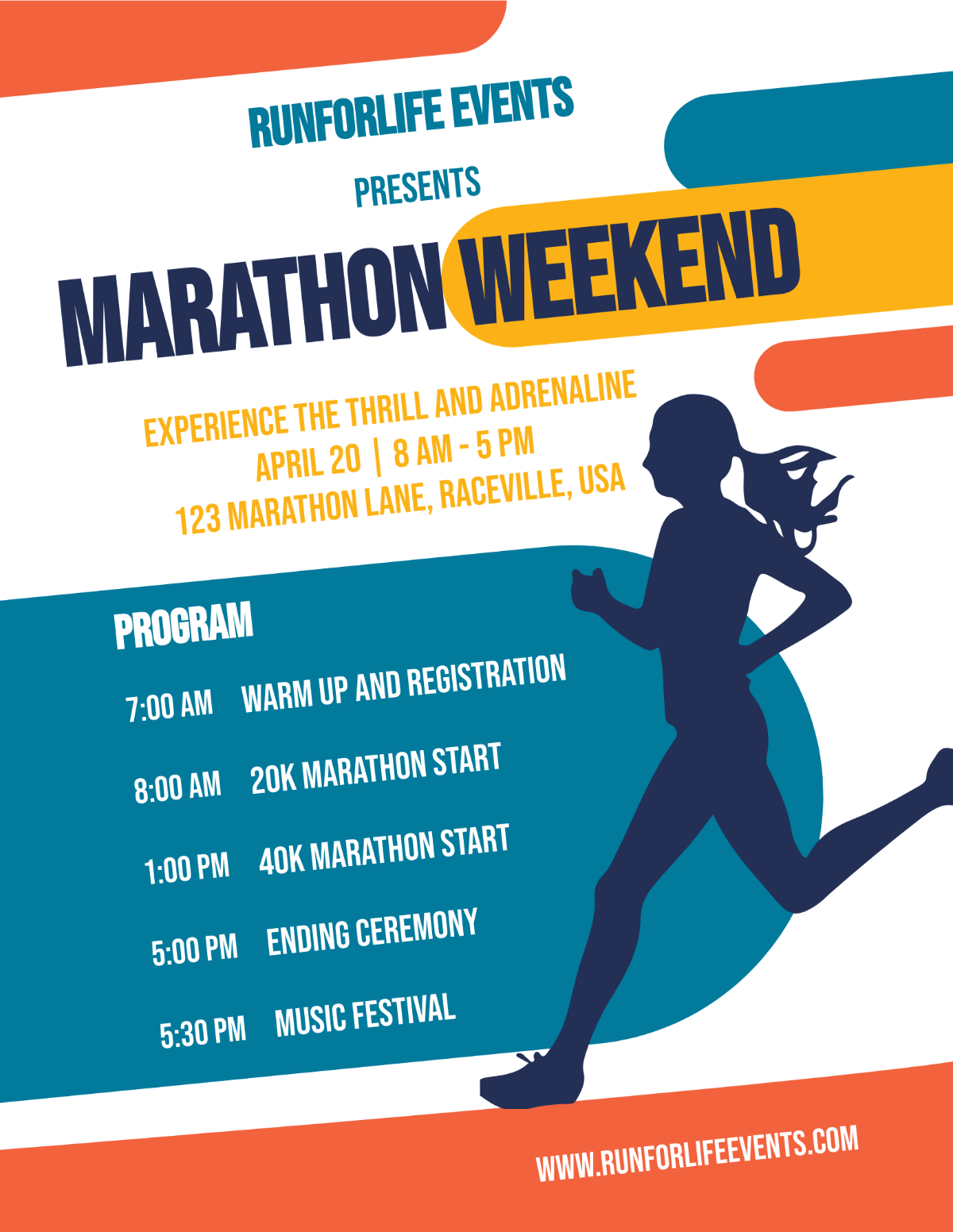Gym Program Proposal
I. Executive Summary
This document proposes a new comprehensive gym program designed to enhance member engagement, improve fitness outcomes, and increase overall revenue at [Your Company Name]. The proposed program, "Fit for Life," targets diverse age groups and fitness levels, offering specialized classes, personal training, and wellness workshops. The total budget for the implementation of this program is $250,000, which includes marketing, equipment, staffing, and facility upgrades. The program is set to launch in January 2056, with a phased rollout over six months to ensure smooth integration and member adaptation.
Key components of the "Fit for Life" program include tailored fitness classes, advanced training options, and holistic wellness initiatives. The initiative aims to attract new members and retain existing ones by providing a variety of options to meet their fitness needs and goals. By diversifying our offerings, we expect to see a 20% increase in membership within the first year, contributing significantly to our financial sustainability.
This proposal outlines the detailed plan for the program, including its objectives, target audience, program structure, budget breakdown, and implementation timeline. Through this innovative program, [Your Company Name] will position itself as a leader in the fitness industry, offering unmatched value and support to our members.
II. Program Objectives
A. Enhance Member Engagement
Varied Class Offerings: Introduce a diverse range of fitness classes to cater to different interests and fitness levels. This will include high-intensity interval training (HIIT), yoga, pilates, and dance fitness.
Personalized Fitness Plans: Develop personalized fitness plans for members based on their individual goals and fitness assessments. These plans will be regularly updated to keep members motivated.
Member Feedback Mechanism: Implement a system for regular member feedback to continuously improve class offerings and services. Feedback will be gathered through surveys and focus groups.
Community Building Events: Organize community-building events such as fitness challenges and social gatherings. These events will foster a sense of community and belonging among members.
B. Improve Fitness Outcomes
Certified Trainers: Employ certified trainers with specialized skills to lead classes and provide personal training. This ensures that members receive expert guidance and support.
Fitness Assessments: Conduct comprehensive fitness assessments for all new members to establish baseline fitness levels. Assessments will be repeated periodically to track progress.
Nutritional Workshops: Offer workshops on nutrition and healthy eating to complement fitness training. These workshops will be led by certified nutritionists.
Progress Tracking Tools: Provide members with tools to track their fitness progress, such as mobile apps and wearable devices. These tools will help members stay motivated and accountable.
C. Increase Overall Revenue
Membership Tiers: Introduce new membership tiers with varying levels of access and benefits. This will include premium memberships with additional perks.
Class Packages: Offer discounted packages for multiple class sessions to encourage regular attendance. These packages will provide better value for members and increase class participation.
Corporate Partnerships: Establish partnerships with local businesses to offer corporate wellness programs. These programs will attract new members and generate additional revenue.
Merchandise Sales: Expand the range of branded merchandise available for purchase, including fitness apparel and accessories. This will provide an additional revenue stream.
III. Target Audience
A. General Members
Age Range: Target members aged 18 to 65, encompassing a broad demographic. This range includes young adults, middle-aged individuals, and seniors.
Fitness Levels: Cater to all fitness levels, from beginners to advanced athletes. Offer classes and programs suited to different capabilities and goals.
Interests: Provide a variety of classes to match diverse interests, such as strength training, cardio, flexibility, and mind-body practices.
Member Retention: Focus on retaining current members by offering new and exciting programs. Retention strategies will include personalized attention and exclusive member events.
B. Specific Demographics
Seniors: Develop programs specifically for seniors, focusing on mobility, strength, and balance. These programs will help improve overall health and quality of life for older members.
Youth: Create fitness programs for children and teenagers to promote healthy habits from a young age. Programs will include age-appropriate exercises and activities.
Women: Offer classes and workshops designed for women, addressing their specific fitness needs and preferences. This includes prenatal and postnatal fitness.
Athletes: Provide advanced training programs for athletes looking to enhance their performance. These programs will include sport-specific training and conditioning.
C. Corporate Clients
Employee Wellness: Partner with local businesses to offer employee wellness programs. These programs will include on-site fitness classes and health workshops.
Corporate Discounts: Provide discounted memberships and packages for corporate clients. This will encourage businesses to invest in their employees' health and well-being.
Team Building: Organize team-building activities and fitness challenges for corporate clients. These activities will promote teamwork and improve employee morale.
Customized Programs: Develop customized fitness programs to meet the specific needs of different companies. This will include stress management and ergonomic training.
IV. Program Structure
A. Class Offerings
The following table presents the initial class offerings for the "Fit for Life" program:
Class Type | Description | Frequency (per week) |
|---|---|---|
HIIT | High-intensity interval training for cardio and strength | 5 |
Yoga | Various styles including Vinyasa and Hatha | 7 |
Pilates | Focus on core strength and flexibility | 4 |
Dance Fitness | Fun, dance-based cardio workouts | 3 |
Strength Training | Weightlifting and resistance training | 6 |
Senior Fitness | Low-impact exercises for seniors | 3 |
Youth Fitness | Engaging activities for children and teens | 2 |
HIIT: High-intensity interval training will be offered five times a week, focusing on both cardio and strength. This class is designed to maximize calorie burn and improve cardiovascular fitness in a short period.
Yoga: Various styles of yoga will be available every day of the week, providing flexibility and relaxation. Yoga classes will cater to all levels, from beginners to advanced practitioners.
Pilates: Pilates classes will be held four times a week, emphasizing core strength and flexibility. These classes are suitable for members looking to improve posture and muscle tone.
Dance Fitness: Dance-based cardio workouts will be offered three times a week, making exercise enjoyable and engaging. Dance fitness classes are designed to be fun and energizing, attracting a wide range of participants.
Strength Training: Strength training sessions will occur six times a week, focusing on weightlifting and resistance exercises. These classes are aimed at building muscle and enhancing overall strength.
Senior Fitness: Low-impact exercises for seniors will be available three times a week, promoting mobility and balance. Senior fitness classes help older members maintain independence and improve their quality of life.
Youth Fitness: Engaging activities for children and teens will be offered twice a week, encouraging healthy habits from a young age. Youth fitness programs are designed to be fun and educational.
Offering a diverse range of classes ensures that the "Fit for Life" program caters to various interests and fitness levels. Regularly updating the class schedule based on member feedback will keep the program dynamic and appealing.
B. Personal Training
One-on-One Sessions: Offer personalized training sessions tailored to individual goals. These sessions provide focused attention and customized workout plans.
Small Group Training: Provide small group training options for 2-4 people. This format offers personalized attention while fostering a sense of community.
Specialized Training: Develop specialized training programs for specific goals, such as weight loss or sports performance. These programs offer targeted support and expertise.
Trainer Certification: Ensure all trainers are certified and regularly updated on the latest fitness trends. High-quality training ensures member safety and effective workouts.
C. Wellness Workshops
Nutrition Workshops: Offer workshops on healthy eating and meal planning. These workshops will be led by certified nutritionists.
Stress Management: Provide workshops on stress management techniques, including meditation and mindfulness. These workshops will help members manage stress and improve mental well-being.
Health Screenings: Organize regular health screenings for members, including blood pressure and cholesterol checks. These screenings promote preventative health care.
Lifestyle Coaching: Offer lifestyle coaching sessions to help members achieve their health and wellness goals. Coaches will provide support and guidance on various aspects of healthy living.
V. Budget Breakdown
A. Initial Investment
The following chart and table outline the initial investment required for the program:
Expense Category | Amount |
|---|---|
Marketing and Promotion | $50,000 |
Equipment | $75,000 |
Staffing | $80,000 |
Facility Upgrades | $30,000 |
Miscellaneous | $15,000 |
Total | $250,000 |
Marketing and Promotion: Allocating $50,000 for marketing and promotion ensures a strong launch for the program. Effective marketing strategies will attract new members and generate interest in the "Fit for Life" program.
Equipment: Investing $75,000 in new equipment will enhance the quality of our fitness offerings. Upgrading and expanding our equipment selection ensures that members have access to the best resources for their workouts.
Staffing: A budget of $80,000 for staffing will cover hiring certified trainers and wellness experts. Quality staffing is crucial for delivering high-quality services and achieving program objectives.
Facility Upgrades: Allocating $30,000 for facility upgrades will improve the overall gym environment. Upgrades may include renovations, new flooring, and enhanced amenities to create a welcoming space for members.
Miscellaneous: A miscellaneous budget of $15,000 covers unexpected expenses and ensures flexibility. This category accounts for any additional costs that may arise during the program's implementation.
A well-planned budget is essential for the successful launch and sustainability of the "Fit for Life" program. By investing in key areas such as marketing, equipment, staffing, and facilities, [Your Company Name] ensures that the program is well-supported and positioned for success.
B. Ongoing Costs
Staff Salaries: Allocate funds for ongoing staff salaries, ensuring competitive compensation to retain qualified trainers and wellness experts.
Equipment Maintenance: Budget for regular maintenance and replacement of equipment to ensure safety and functionality.
Program Marketing: Continue to invest in marketing efforts to attract new members and retain existing ones. Ongoing marketing is crucial for maintaining program visibility and interest.
Workshop Materials: Provide funds for materials and resources needed for wellness workshops. High-quality materials enhance the learning experience for members.
VI. Marketing and Promotion
A. Marketing Strategy
Targeted Advertising: Utilize targeted advertising to reach potential members through social media, search engines, and local publications.
Referral Programs: Implement referral programs to encourage current members to refer friends and family. Offer incentives such as discounts or free classes.
Community Outreach: Engage in community outreach activities, such as hosting free fitness classes in local parks. Community involvement increases visibility and attracts new members.
Promotional Events: Organize promotional events and open houses to showcase the program. These events provide an opportunity for potential members to experience the program firsthand.
B. Promotional Materials
Flyers and Brochures: Distribute flyers and brochures in strategic locations, such as local businesses and community centers. These materials provide detailed information about the program.
Social Media Campaigns: Launch social media campaigns to promote the program and engage with the community. Utilize platforms such as Facebook, Instagram, and Twitter.
Email Newsletters: Send regular email newsletters to keep current and potential members informed about program updates and special offers.
Website Updates: Ensure the gym's website is regularly updated with information about the program. A user-friendly website enhances member experience and provides essential information.
VII. Implementation Timeline
A. Phased Rollout
The following table outlines the phased rollout timeline for the "Fit for Life" program:
Phase | Timeline | Activities |
|---|---|---|
1 | January - March 2056 | Initial marketing and promotion, hire staff, purchase equipment |
2 | April - June 2056 | Facility upgrades, staff training, program launch |
3 | July - September 2056 | Evaluate program performance, gather member feedback, make adjustments |
4 | October - December 2056 | Expand class offerings, launch corporate programs, ongoing marketing |
Phase 1: During the initial phase from January to March 2056, we will focus on marketing and promotion, hiring staff, and purchasing equipment. These activities are crucial for laying the foundation of the program and ensuring a successful launch.
Phase 2: From April to June 2056, we will complete facility upgrades and provide comprehensive training for staff. The official program launch will take place during this phase, introducing the "Fit for Life" program to our members.
Phase 3: In the third phase, from July to September 2056, we will evaluate program performance and gather member feedback. This phase allows us to make necessary adjustments to improve the program.
Phase 4: The final phase, from October to December 2056, will focus on expanding class offerings and launching corporate programs. Ongoing marketing efforts will continue to attract new members and retain existing ones.
A phased rollout ensures that the program will be implemented smoothly and effectively. By breaking down the implementation into manageable phases, [Your Company Name] can address any challenges that arise and make necessary adjustments to enhance program success.
B. Staff Training
Orientation: Conduct orientation sessions for new staff to familiarize them with the program and their roles. Proper orientation ensures that staff are well-prepared and confident.
Ongoing Training: Provide ongoing training to keep staff updated on the latest fitness trends and best practices. Continuous training supports professional development and program excellence.
Workshops: Organize workshops for staff to enhance their skills in areas such as customer service and member engagement. Skill-building workshops contribute to a positive member experience.
Evaluation: Regularly evaluate staff performance and provide feedback for improvement. Performance evaluations help maintain high standards and identify areas for growth.
C. Facility Upgrades
Renovations: Complete necessary renovations to create a welcoming and functional gym environment. Upgrades may include new flooring, lighting, and decor.
Equipment Installation: Install new equipment and ensure it is properly set up and maintained. High-quality equipment is essential for delivering effective workouts.
Safety Measures: Implement safety measures to ensure a safe workout environment for members. This includes regular maintenance and safety checks.
Accessibility: Ensure that the facility is accessible to all members, including those with disabilities. Accessibility enhancements create an inclusive environment.
VIII. Evaluation and Feedback
A. Member Feedback
Surveys: Conduct regular surveys to gather member feedback on the program. Surveys provide valuable insights into member satisfaction and areas for improvement.
Focus Groups: Organize focus groups to discuss specific aspects of the program in detail. Focus groups offer in-depth feedback and suggestions.
Suggestion Box: Provide a suggestion box for members to share their ideas and concerns. A suggestion box encourages open communication and member involvement.
Online Reviews: Monitor online reviews and social media comments to understand member experiences. Online feedback helps identify trends and address issues promptly.
B. Program Evaluation
Performance Metrics: Track key performance metrics such as membership growth, class attendance, and revenue. Metrics provide a quantitative measure of program success.
Goal Achievement: Assess the achievement of program goals and objectives. Regular evaluation ensures that the program stays on track and meets its targets.
Continuous Improvement: Implement a continuous improvement process to enhance the program based on evaluation findings. Continuous improvement ensures long-term success.
Reporting: Prepare regular reports on program performance and present them to stakeholders. Reports provide transparency and accountability.
IX. Conclusion
The "Fit for Life" program proposal outlines a comprehensive plan to enhance member engagement, improve fitness outcomes, and increase revenue for [Your Company Name]. With a detailed budget, phased implementation timeline, and robust marketing strategy, this program is poised to achieve significant success. By offering diverse class offerings, personalized training, and holistic wellness initiatives, [Your Company Name] will meet the needs of a broad demographic, ensuring member satisfaction and loyalty.
The proposed program reflects our commitment to innovation, quality, and excellence in the fitness industry. Through continuous evaluation and improvement, we will maintain the relevance and effectiveness of the program, positioning [Your Company Name] as a leader in the fitness community.
